Published July 17, 2020
You’re walking along the Toronto Harbour. You’re feeling the breeze coming off the water. You’re listening to the gulls calling. You’re admiring the way the sunlight makes the water sparkle.
Beyond the glimmering surface of Lake Ontario, you see a strange creature swimming…

What could it be? An albino fish? Some kind of water snake? Oh dear... what you’re seeing is actually a floating condom.
Unfortunately, you will find both wildlife and water pollution in the Toronto Harbour.
Condoms, feminine hygiene products, and disposable wipes in the water are indicators that sewage pollution is present. All too often, the things that we flush down the toilet end up in Lake Ontario, where they harm ecosystems and make the water unsafe for recreation.
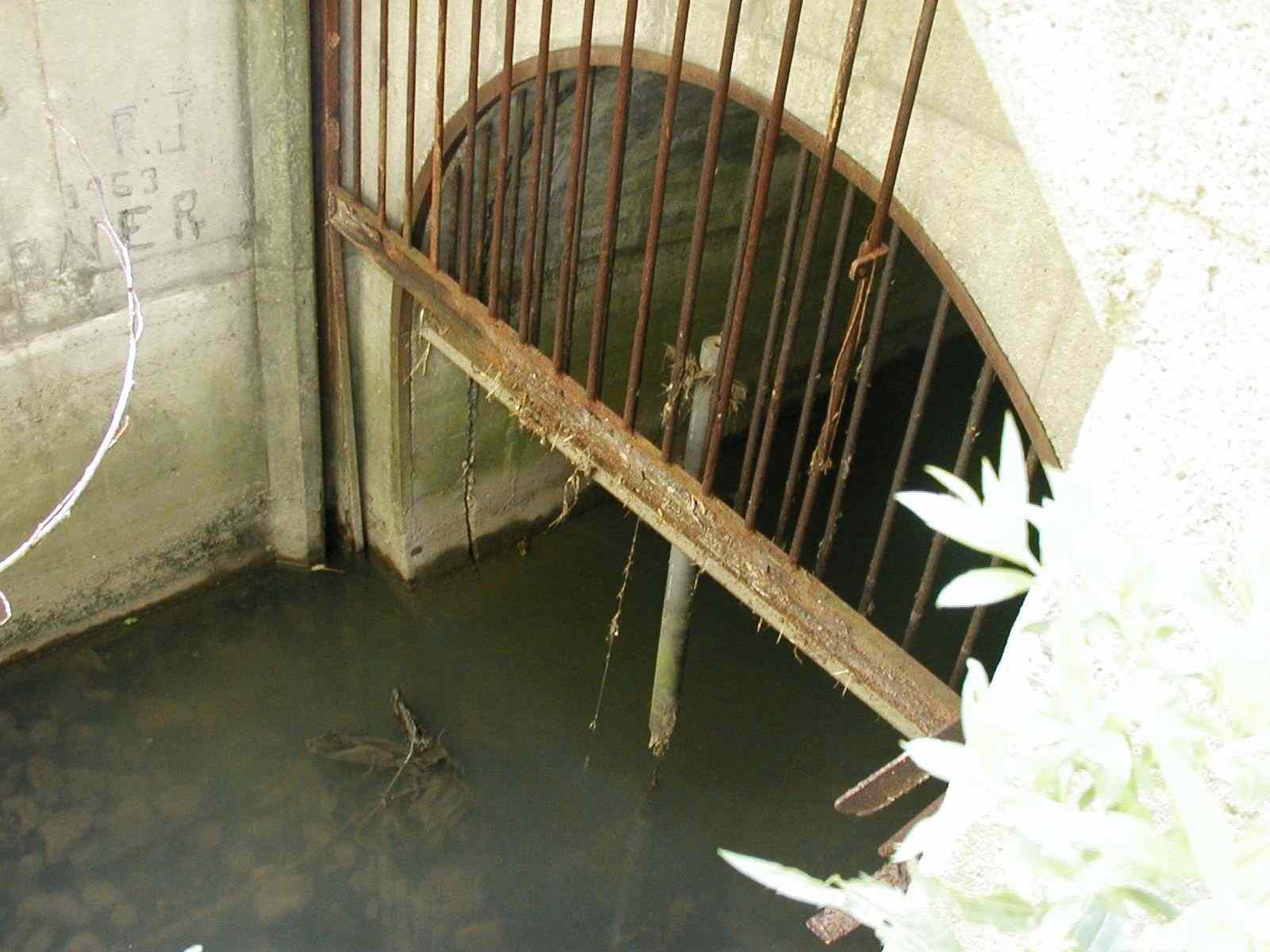
By playing a game of Toronto Harbour Bingo, you’ll learn to identify some of the area’s most interesting inhabitants (as well as some of its most harmful pollution).
While you’re playing Toronto Harbour Bingo, take photos of what you see (whether it’s pollution, wildlife, or people enjoying the water). You can submit your photos to Gassy, our new photo submission tool to become a citizen scientist and help capture and document water health data.
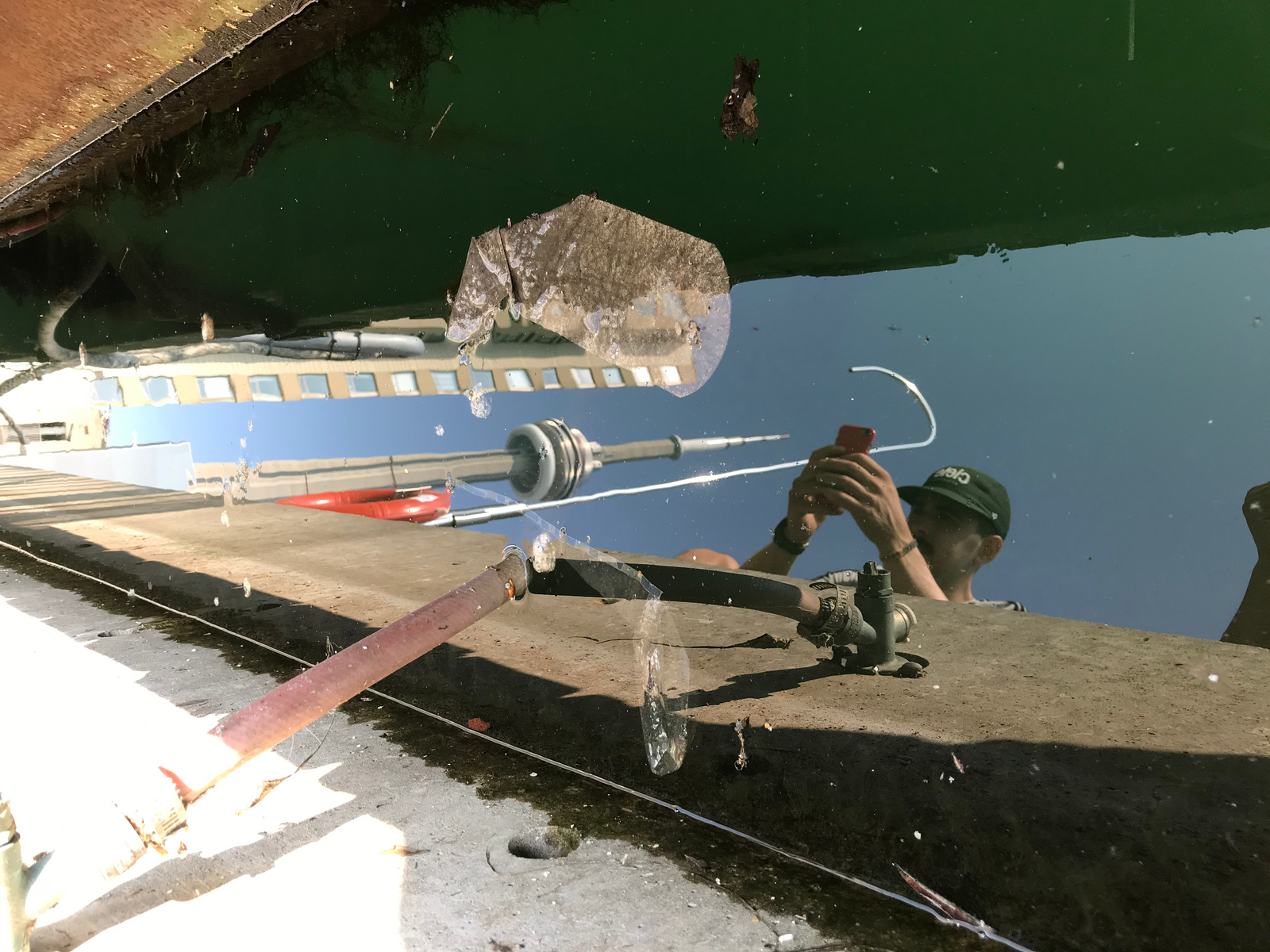
Index
Wildlife
Barn Swallow
Pigeon
Red-winged Blackbird
Ring-billed Gull
Mallard
Canada Goose
Trumpeter Swan
Peregrine Falcon
Double-crested Cormorant
Black-crowned Night-Heron
Fish
Mussels
Racoon
Mink
Monarch Butterfly
Mayflies
Types of Pollution
Litter
Water bottles, dog poop bags, and other plasticTim Hortons cups and cans
Sewage
Face masks, plastic gloves, and wipes
Tampon applicators and condoms
Other
Plants
Recreational water users
Anything that needs Lake Ontario’s water
People sampling water quality
Without further ado, here are 24 things to spot in the Toronto Harbour:
Wildlife
1
Barn Swallow
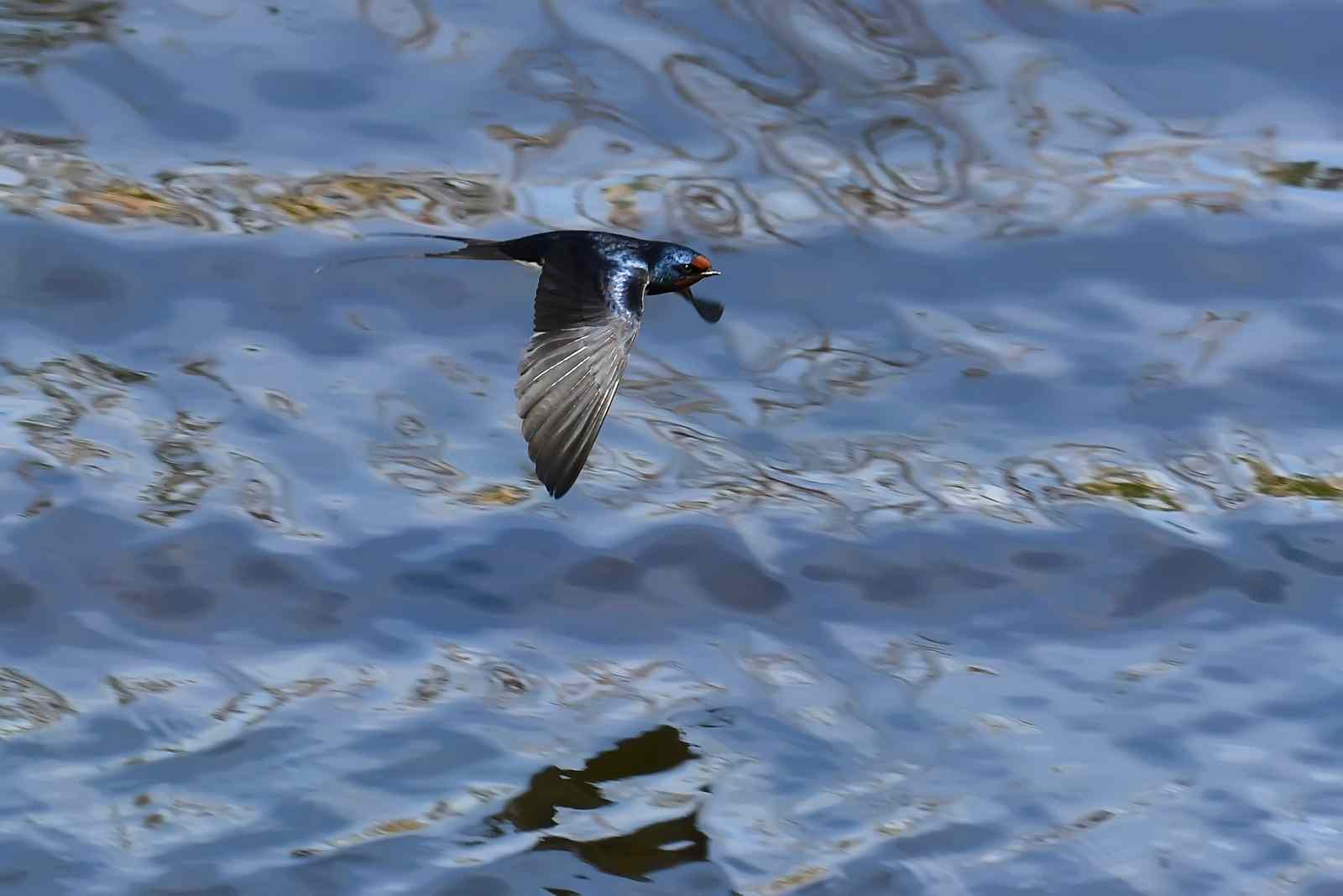
Barn Swallows have bright blue bodies and forked tails. They eat lots of insects, which helps control insect populations. Barn Swallows are also a food source for hawks, gulls, racoons, fish, snakes, and many more predators.
Barn Swallows build mud nests almost exclusively on human-made structures. At the Toronto Harbour, they often nest under the wavedecks.
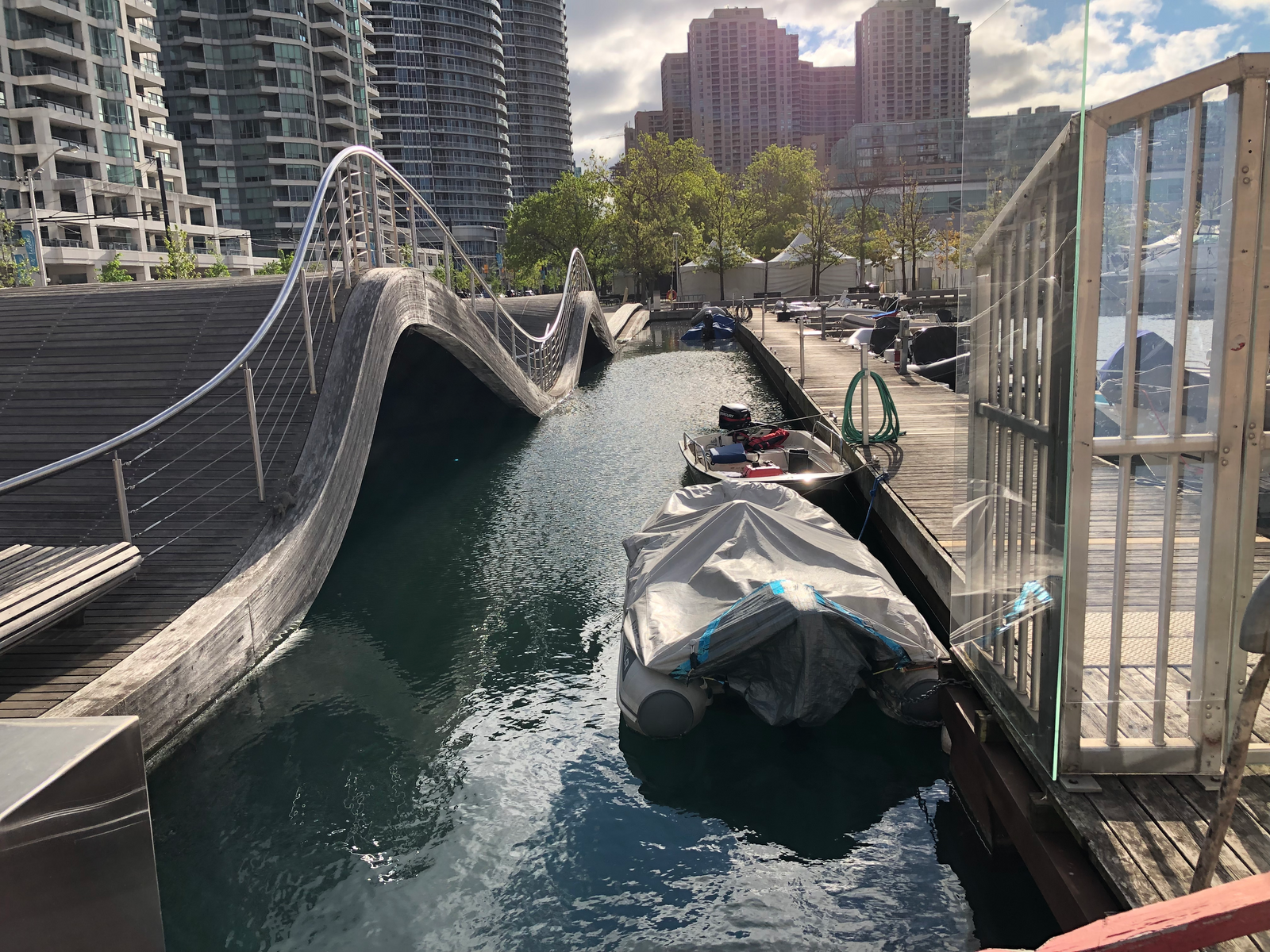
In the past 40 years, Barn Swallow populations in Canada have declined by about 80%, likely due to insecticides which were toxic to the birds and diminished insect food supply. Today, Barn Swallows are listed as a threatened species.
2
Pigeon
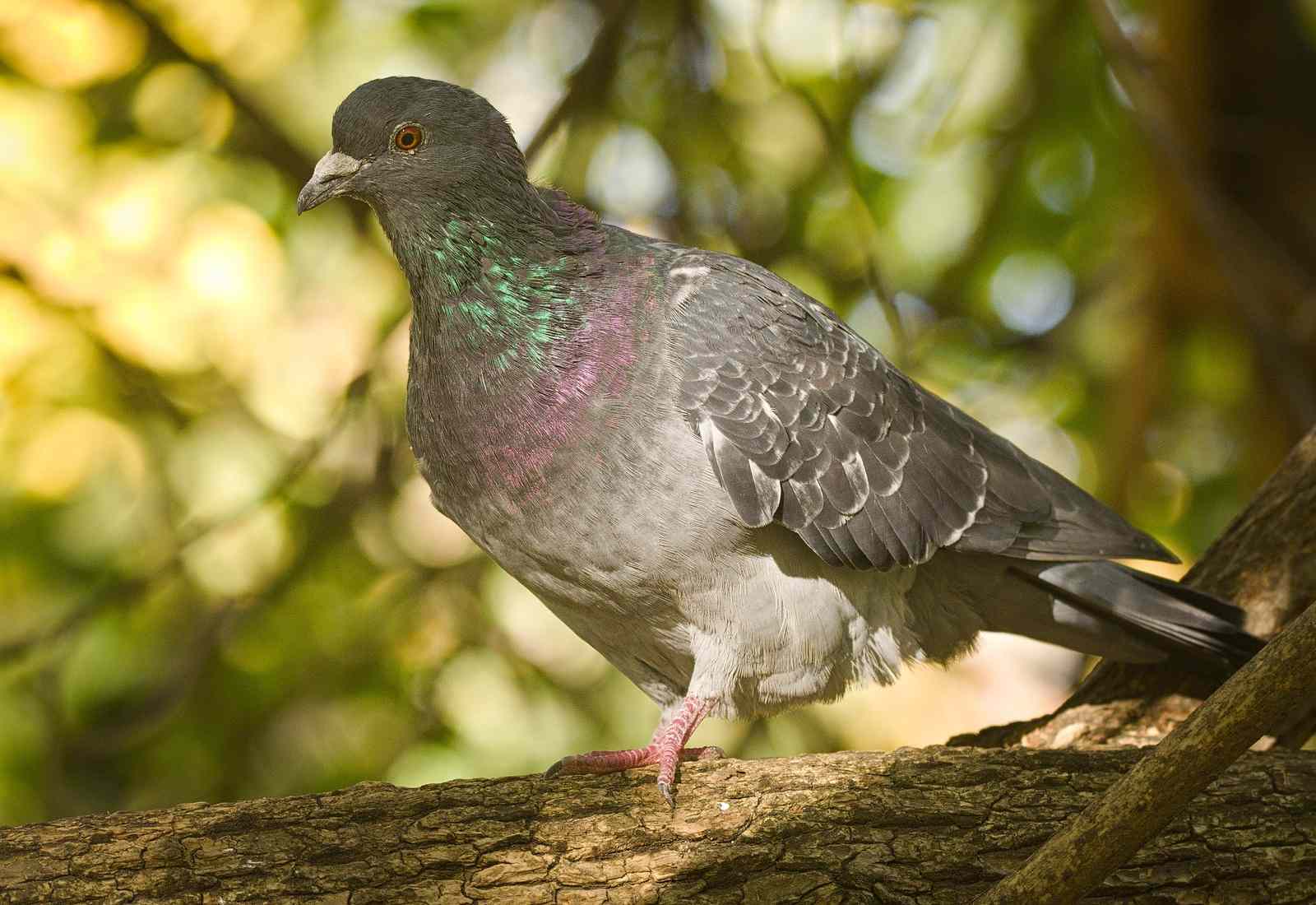
Pigeons (un-affectionately known as ‘sky rats’) often get a bad rap, but they’re actually very important. Pigeons are so common and so widespread that environmental researchers study pigeons to learn about a variety of things (such as environmental pollutants, avian disease, regional biodiversity, and climate change).
Pigeons are also a valuable food source for a number of raptors, such as Peregrine Falcons.
Did You Know?
3
Red-winged Blackbird
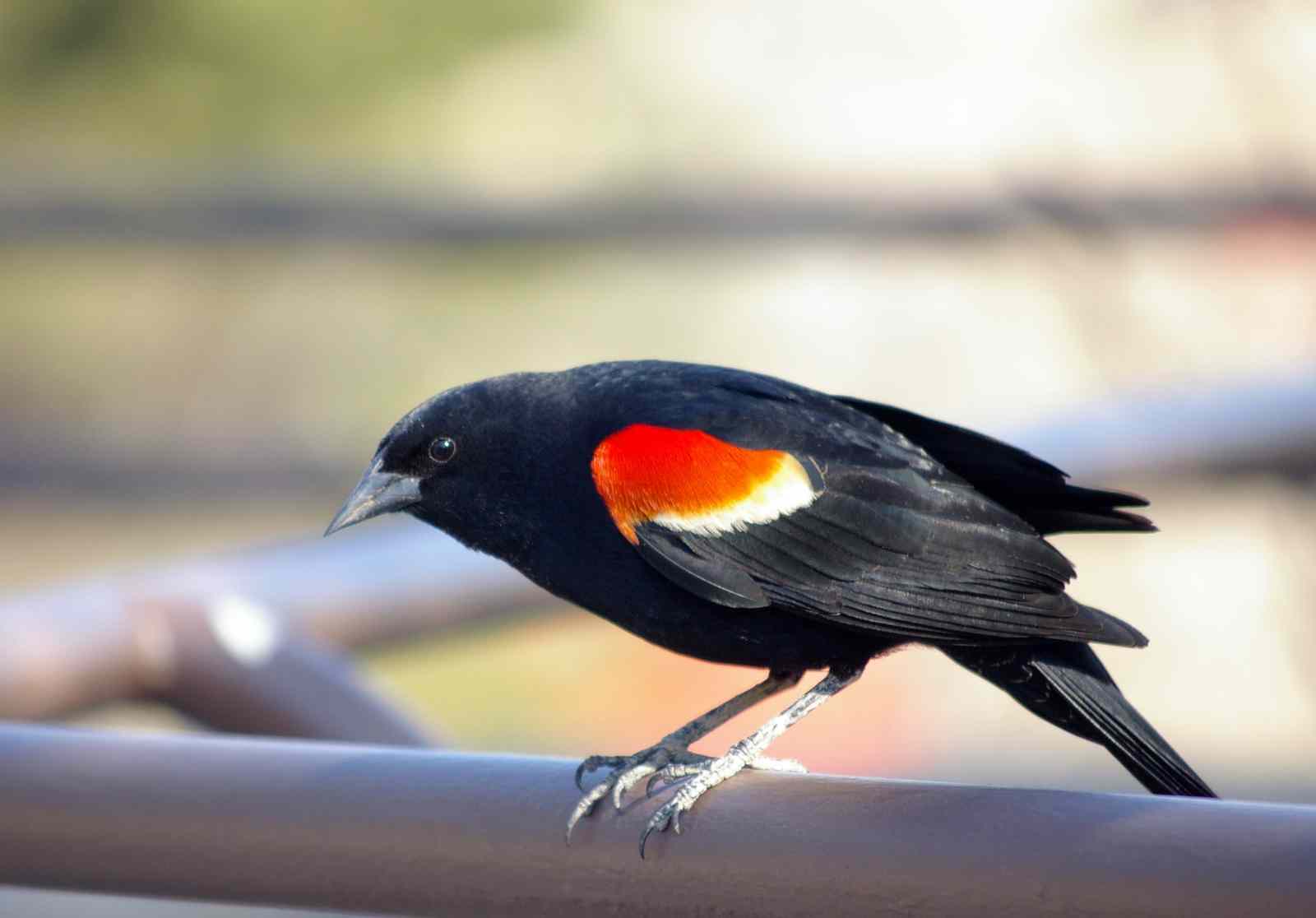
You'll often see Red-winged Blackbirds by the water. Red-winged Blackbirds often station their nests over water to keep their eggs and nestlings safe from predators.
Males are known for their bold, aggressive behaviour during breeding season, and will chase away hawks, horses, and even people from their nests.
Red-winged Blackbirds benefit ecosystems by keeping invertebrate populations under control and eating undesirable weeds. Their diets help other animal species, plants, and crops to thrive.
4
Ring-billed Gull
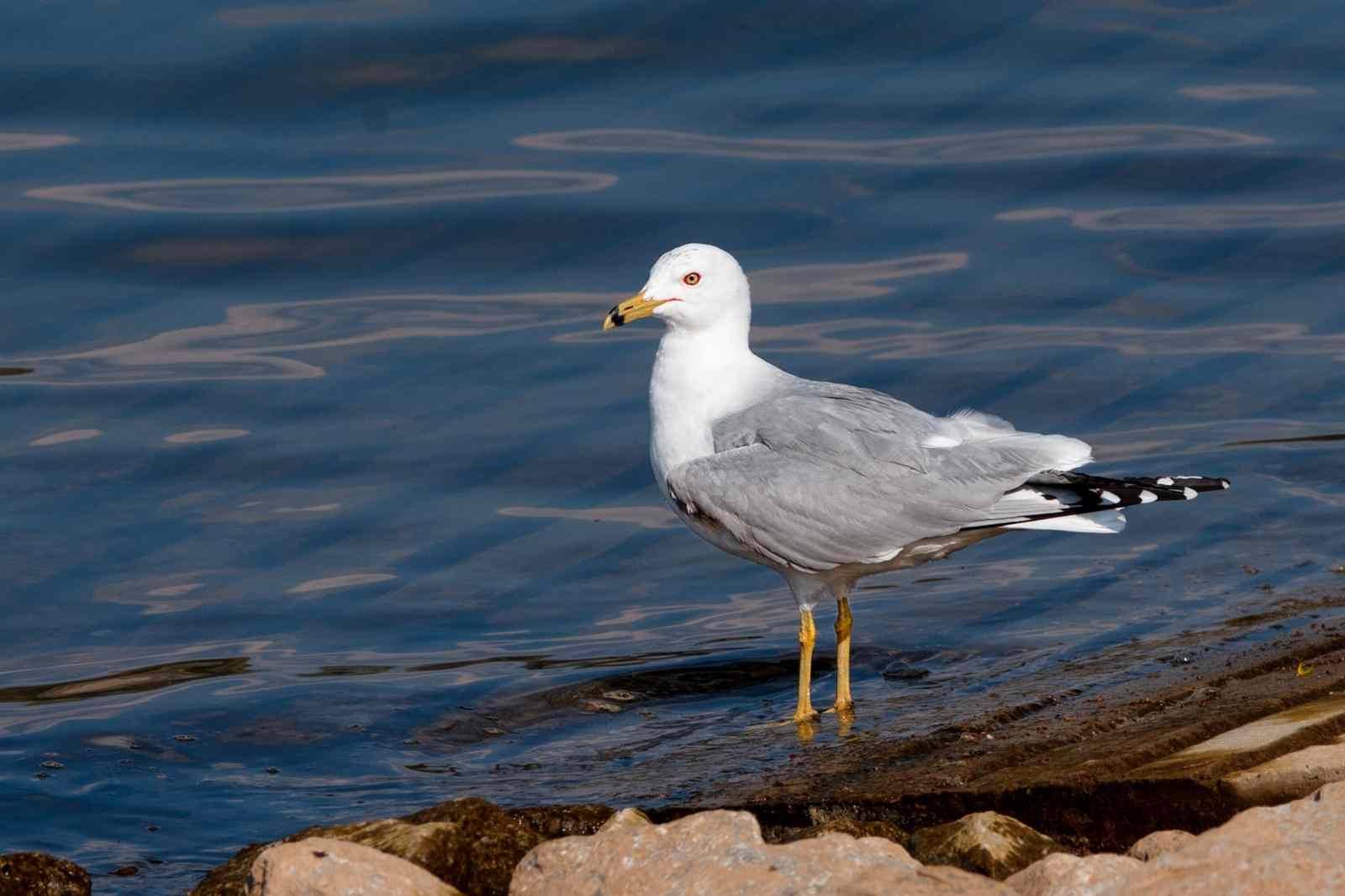
Have you ever been by the water and not heard squawking gulls overhead and feared for your french fries? Ring-billed Gulls are not picky eaters, but they do not subsist on french fries alone.
Ring-billed Gulls won’t think twice about feeding around (and on) garbage. For this reason, Ring-billed Gulls are at a high risk of getting entangled in plastic or swallowing it.
Ring-billed Gulls are scavengers, consuming food that would otherwise end up as waste. Scavengers eat and break down organic material, then release it back into the ecosystem as nutrients.
5
Mallard
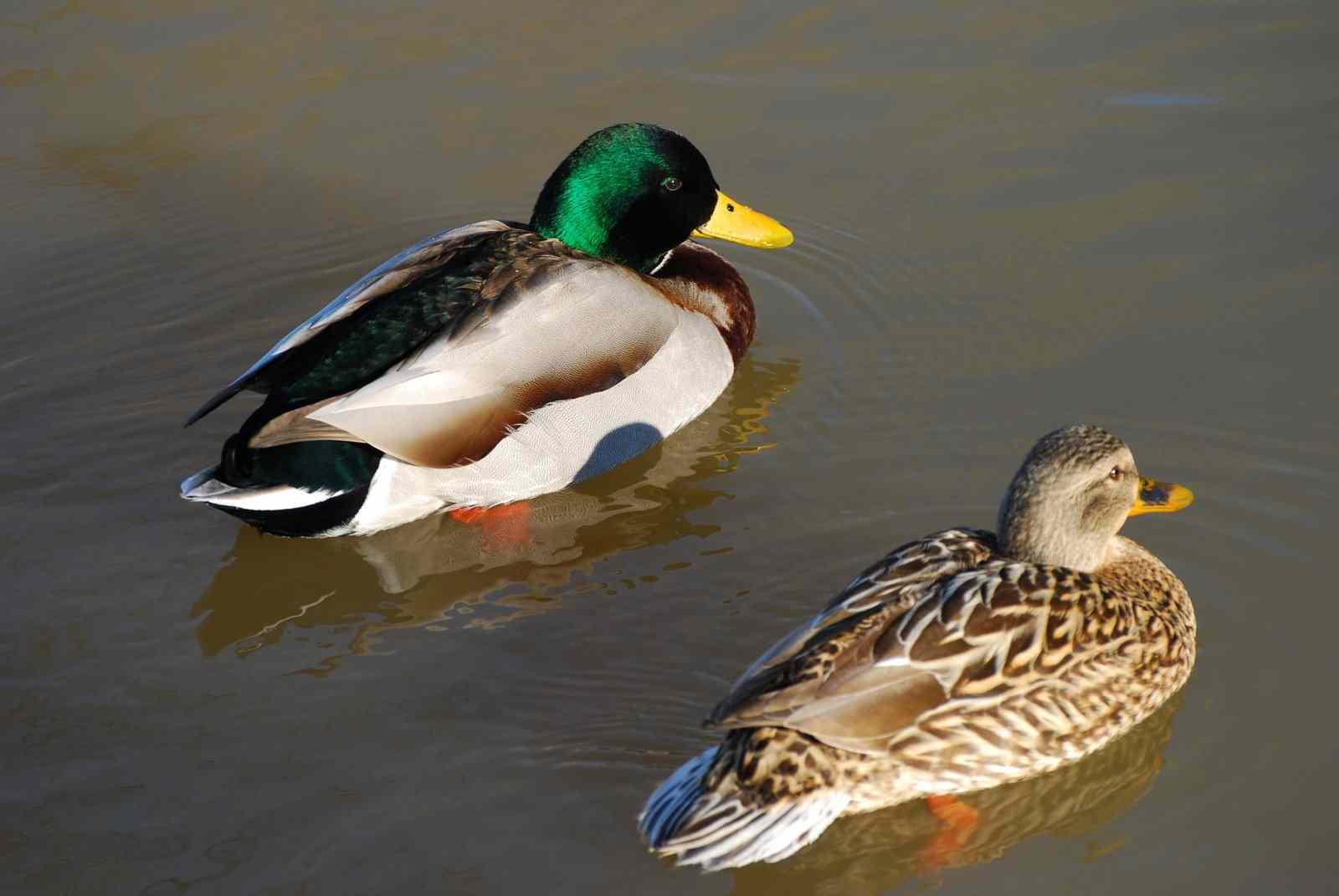
You’ll almost always spot Mallards swimming around the Toronto Harbour. Nothing to get excited about, right? Actually, Mallards play a key role in ecosystems by helping to create healthy and diverse wetlands.
Mallards eat seeds in one place and poop them out somewhere else. Like little gardeners, they’re spreading seeds across a region. And because there are so many Mallards, they’re able to spread lots and lots of seeds!
6
Canada Goose
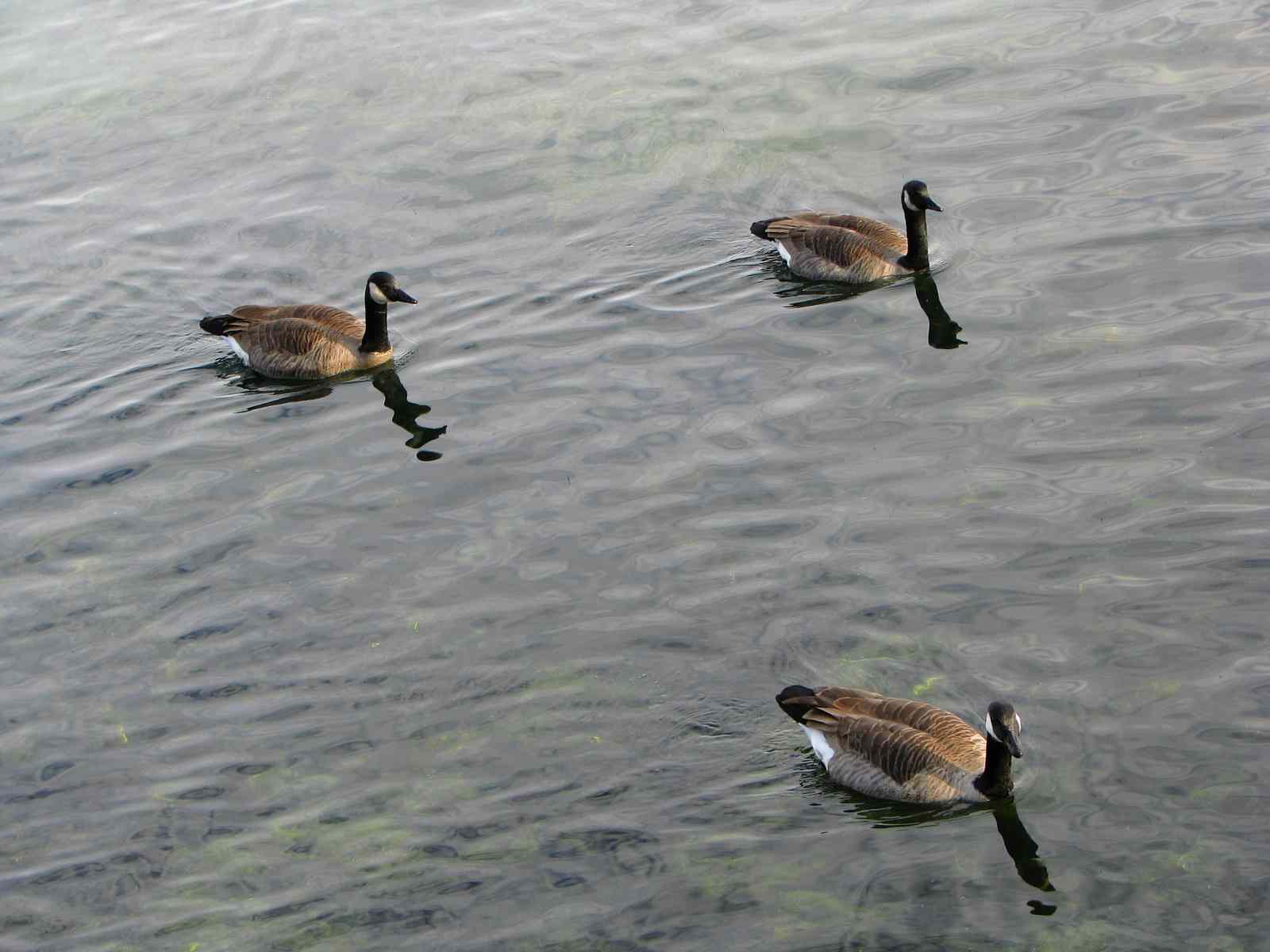
More often than not, Canada Geese are viewed as pests. However, like Mallards, their large numbers help disperse seeds city-wide.
It may be hard to believe, but in the 19th and early 20th century Canada Goose populations were nearly extinct from things like habitat loss and overexploitation. Today, of course, you only need to step outside to see that Canada Geese—and greenery they unknowingly plant—are flourishing thanks to habitat restoration and conservation work.
7
Trumpeter Swan
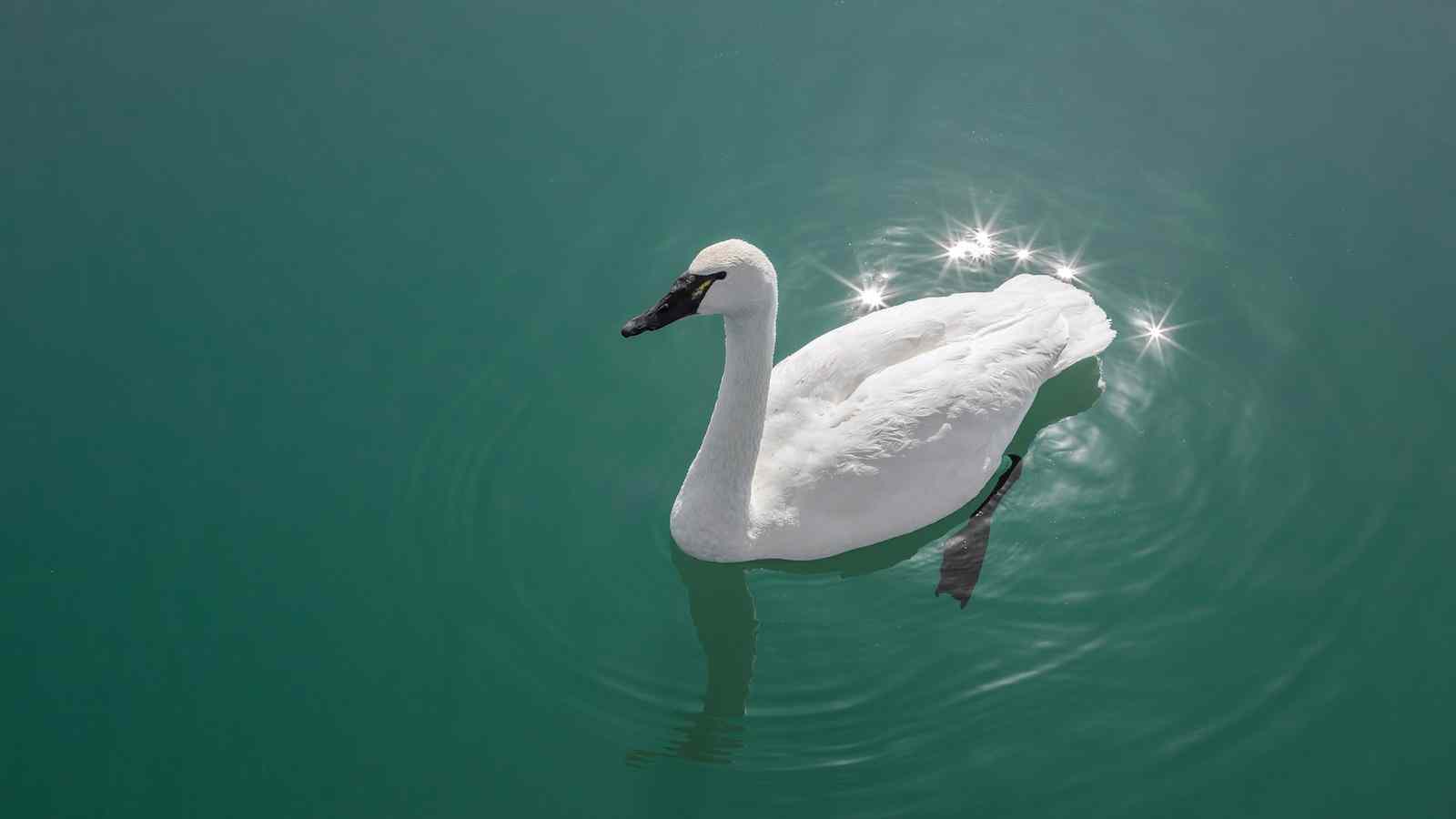
Over 200 years ago, these graceful birds were extirpated in eastern Canada because of hunting and habitat loss. Through conservation work, Trumpeter Swan populations have recovered. And thank goodness they have! Trumpeter Swans’ eating habits are great for plant life in aquatic ecosystems.
As these beautiful birds dig up aquatic plants to eat, they leave holes behind. Water and nutrients enter the soil through these holes, which nourishes plants and other organisms.
8
Peregrine Falcon
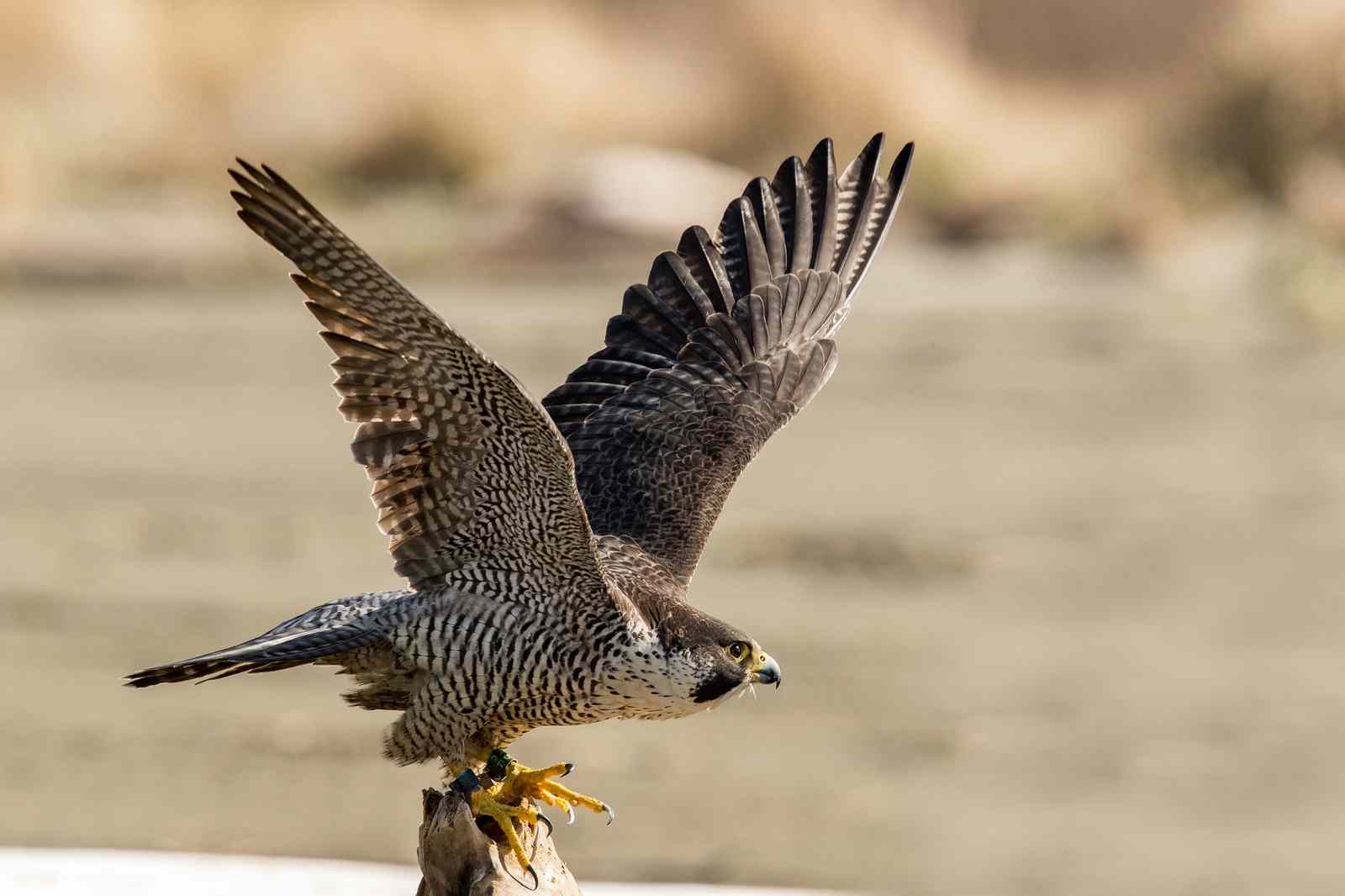
Peregrine Falcons are one of the best hunters in the falcon family. They keep animal populations (especially birds) in check.
These skilled hunters are high up in food chains. Unfortunately, this very position puts them in danger.
Pesticides accumulate in the small bodies of a Peregrine Falcons’s prey. This means Peregrine Falcons consume large amounts of the pesticides as they eat. Pesticides can damage their reproduction abilities and be fatal in large enough amounts.
Peregrine Falcons were once endangered due to DDT pesticide poisoning, In the 1970s, DDT was banned, and Peregrine Falcons populations have since recovered.
9
Double-crested Cormorant
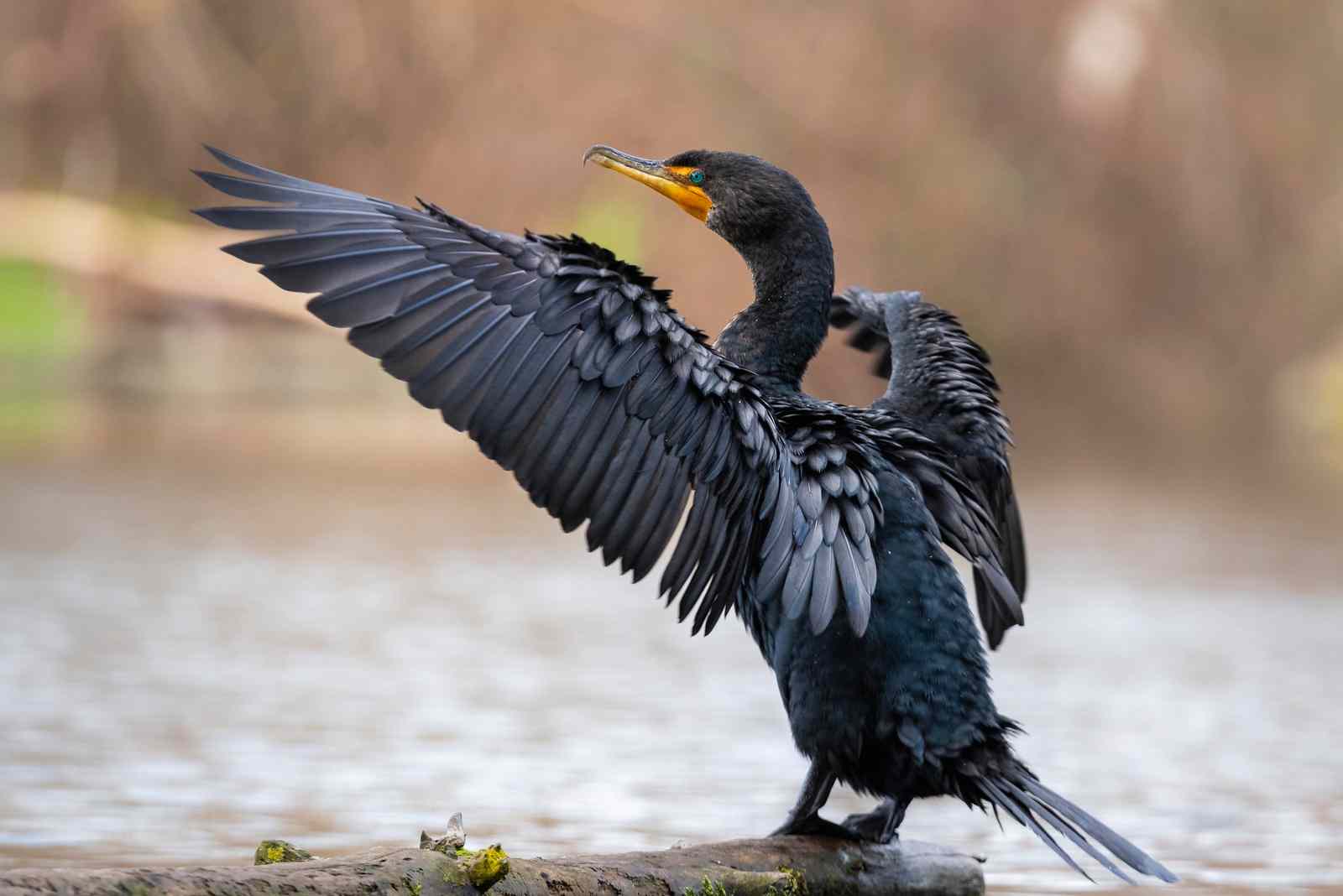
Double-crested Cormorants are controversial creatures.
These striking birds are sometimes mistakenly thought of as an invasive species, but Double-crested Cormorants are native in the Great Lakes.
While it’s true that in high numbers, Double-crested Cormorants can harm trees by stripping their bark and pooping in their soil (throwing off the chemistry), Double-crested Cormorants aren’t all bad.
These birds feed on non-native fish species, which may help control invasive populations. Double-crested Cormorants are also studied by researchers. They’re top predators in aquatic systems, so their health reflects their ecosystem's.
10
Black-crowned Night-Heron
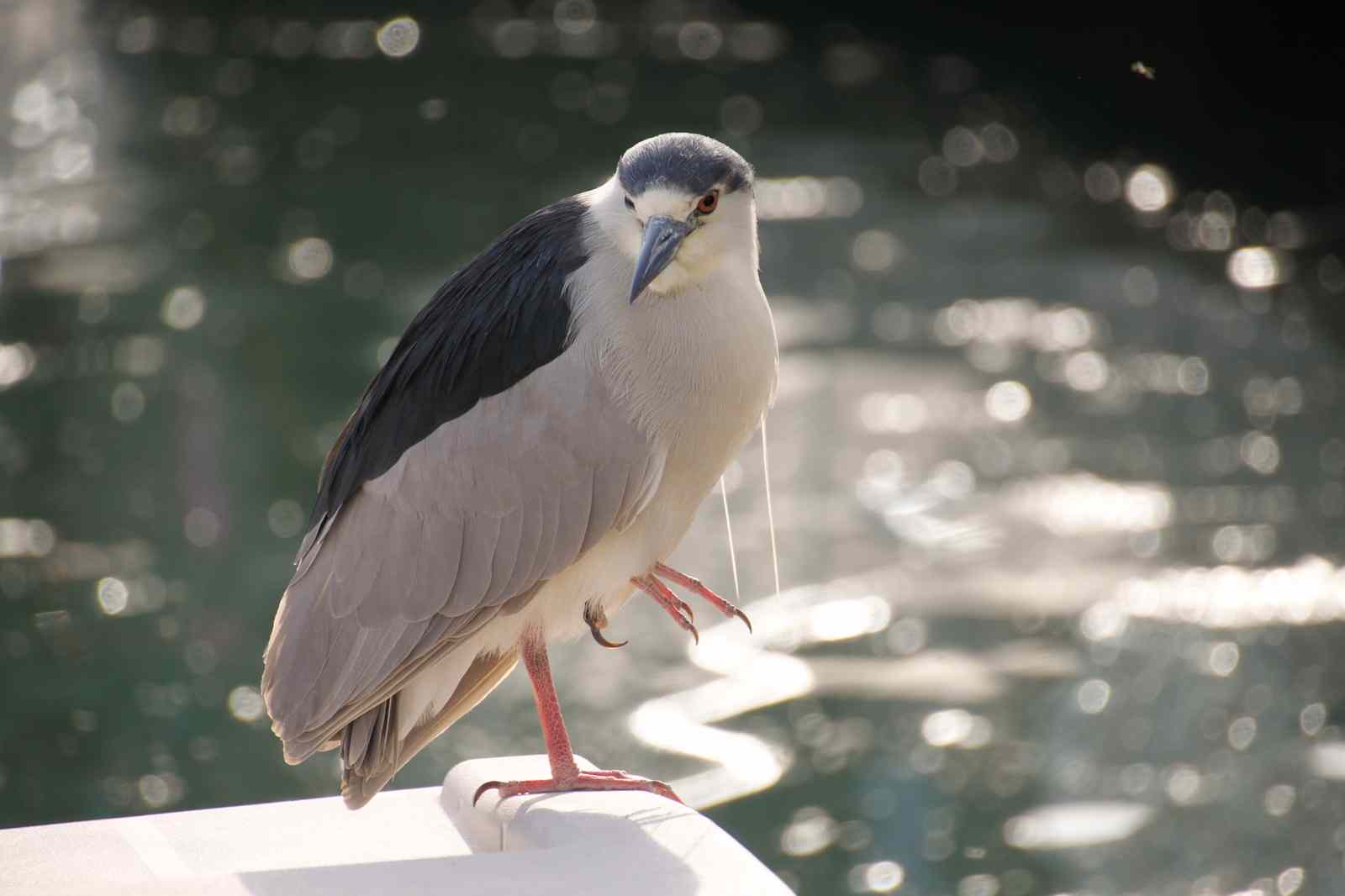
Black-crowned Night-Herons are high up in the food chain. Their colonial nesting and wide distribution mean that, like Double-Crested Cormorants, they are a good indicator their ecosystem’s health.
Did You Know?
Black-crowned Night-Herons are most active at night and on cloudy days. At the Toronto Harbour, you can look for them under the Simcoe Wavedeck at Marina Four.
Although Toronto’s Black-crowned Night-Heron populations have decreased in recent years, the Leslie Street Spit remains home to their largest breeding colony in Ontario.
11
Fish
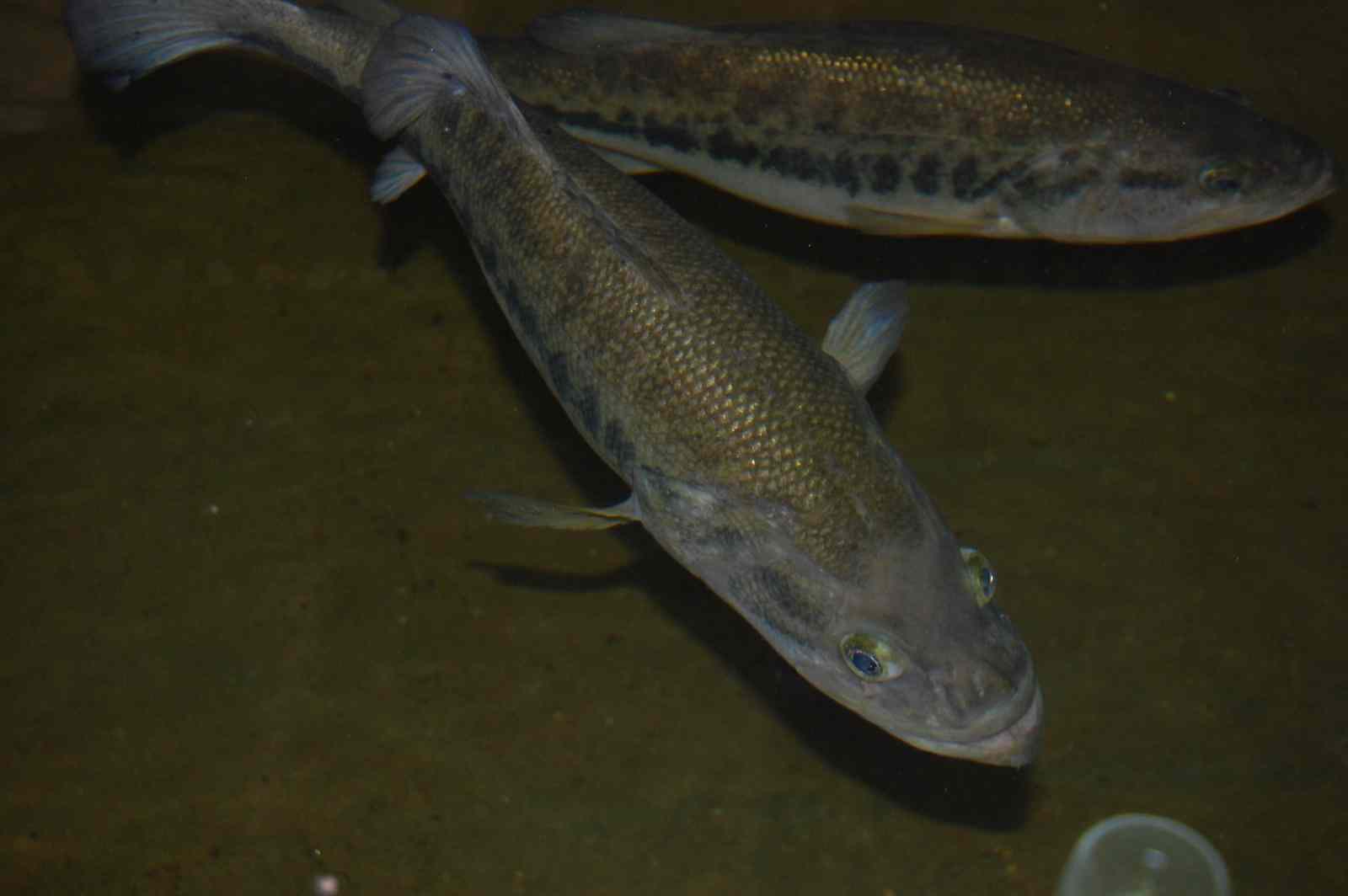
There are over 150 species of fish in Ontario. The Toronto Harbour is home to species like Northern Pike, Common Carp, Largemouth Bass, and Black Crappie.
Muskellunge once lived in the Toronto Harbour, but populations began declining in the 1840s due to overfishing. By 1854, Muskellunge populations had collapsed, and they have never recovered.
Fish are crucial to ecosystem nutrient cycles. Fish store nutrients, then excrete them all over a waterbody. This delivers essential nutrients to aquatic plants and algae.
Did You Know?
Can you eat fish from the Toronto Harbour? Click here to find out.
12
Mussels
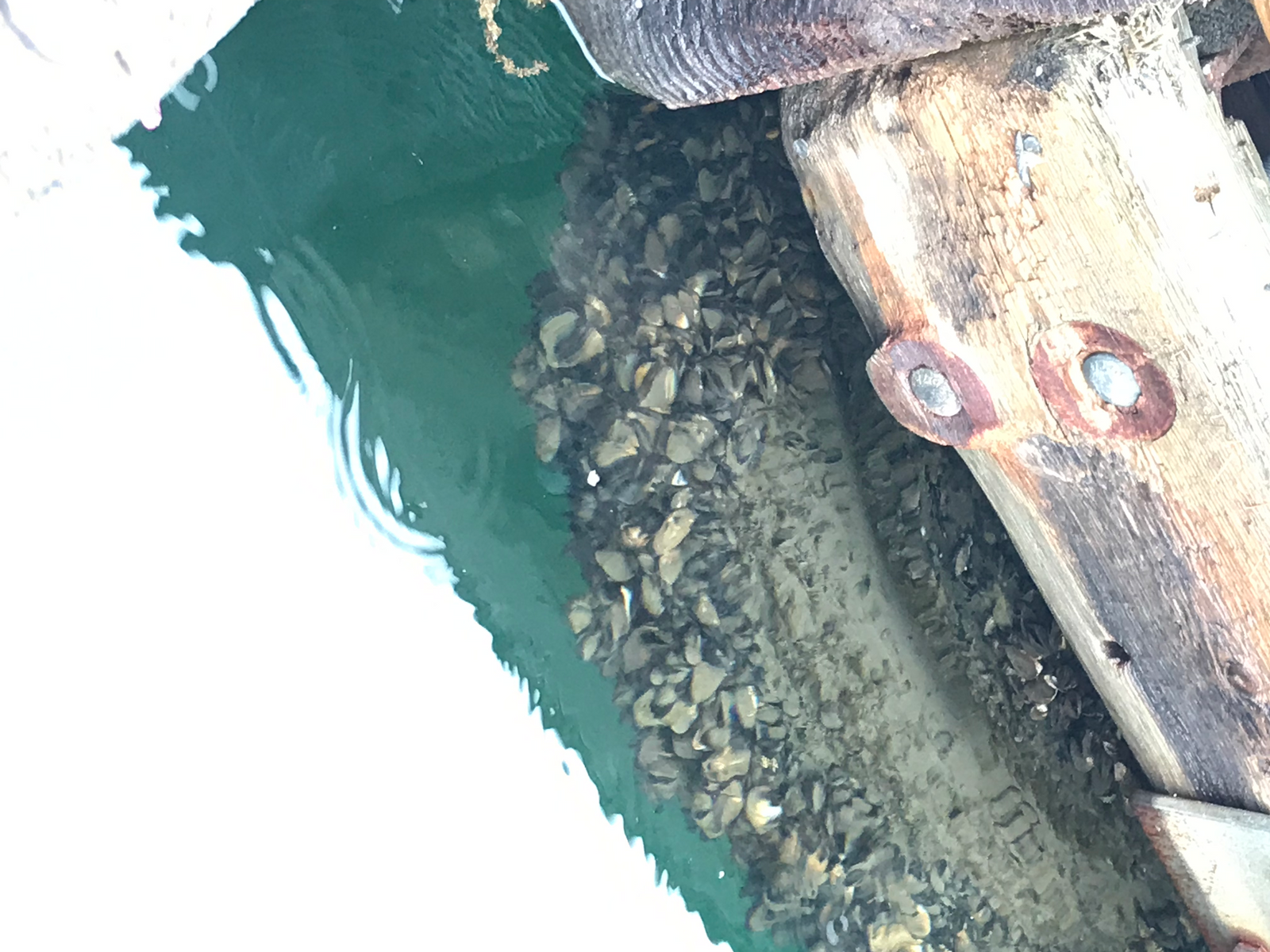
Under the docks at Marina Four, you’ll find Zebra and Quagga Mussels.
Zebra and Quagga Mussels are an invasive species. They are native to the Black Sea region, and were likely brought to the Great Lakes by transoceanic ships in the late 1980s.
In the Great Lakes, these mussels can harm ecosystems by changing food webs and decreasing biodiversity. They also damage harbours, waterways, and the pipes of water treatment plants.
13
Racoon
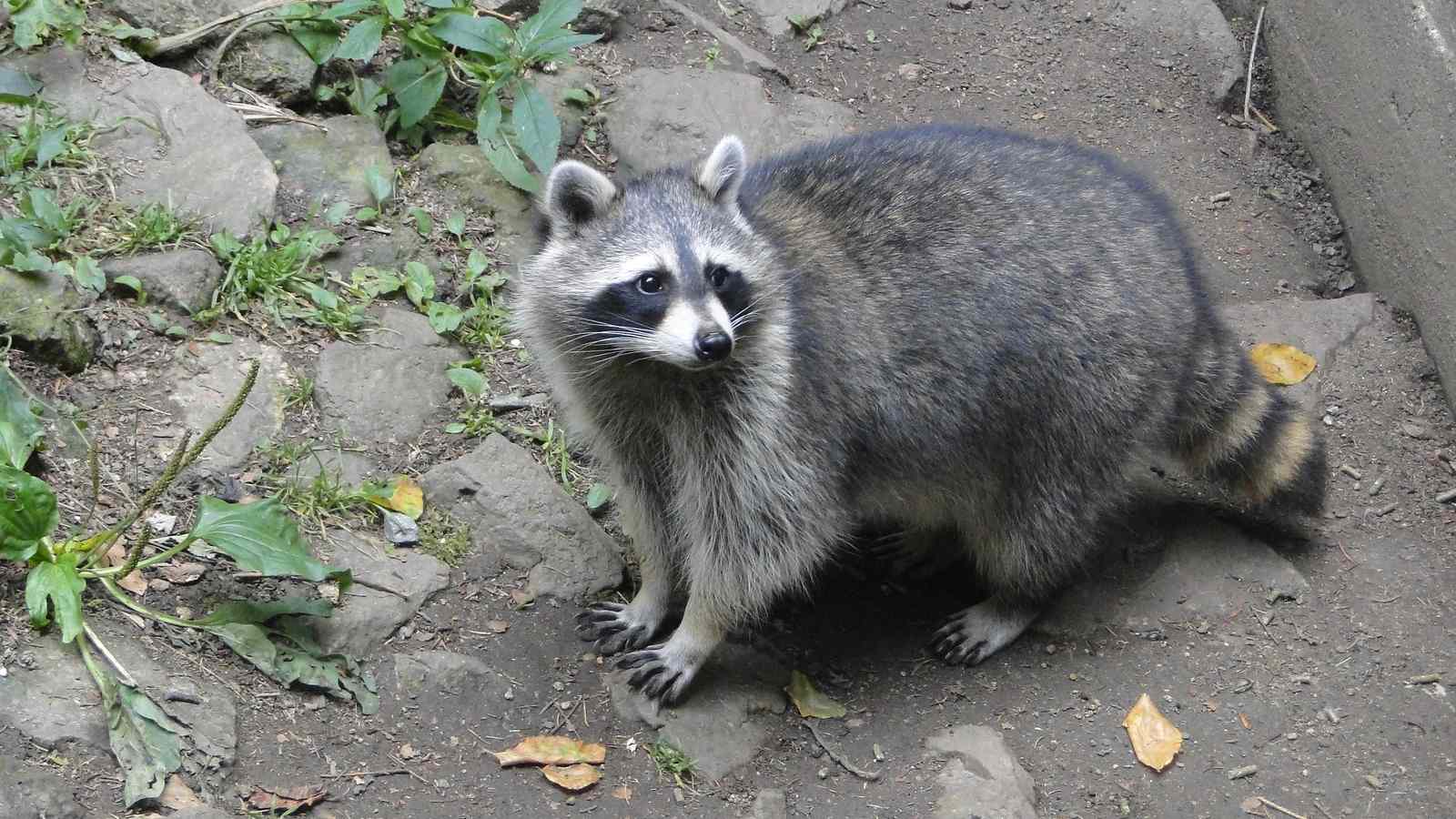
Racoons may be best known for making a mess of your green bin, but they eat more than just garbage.
These masked bandits also eat crustaceans and mollusks, helping to control their populations. Racoons eat nuts, fruit, and berries as well. When they poop out the seeds, they’re they help new plant life grow.
14
Mink
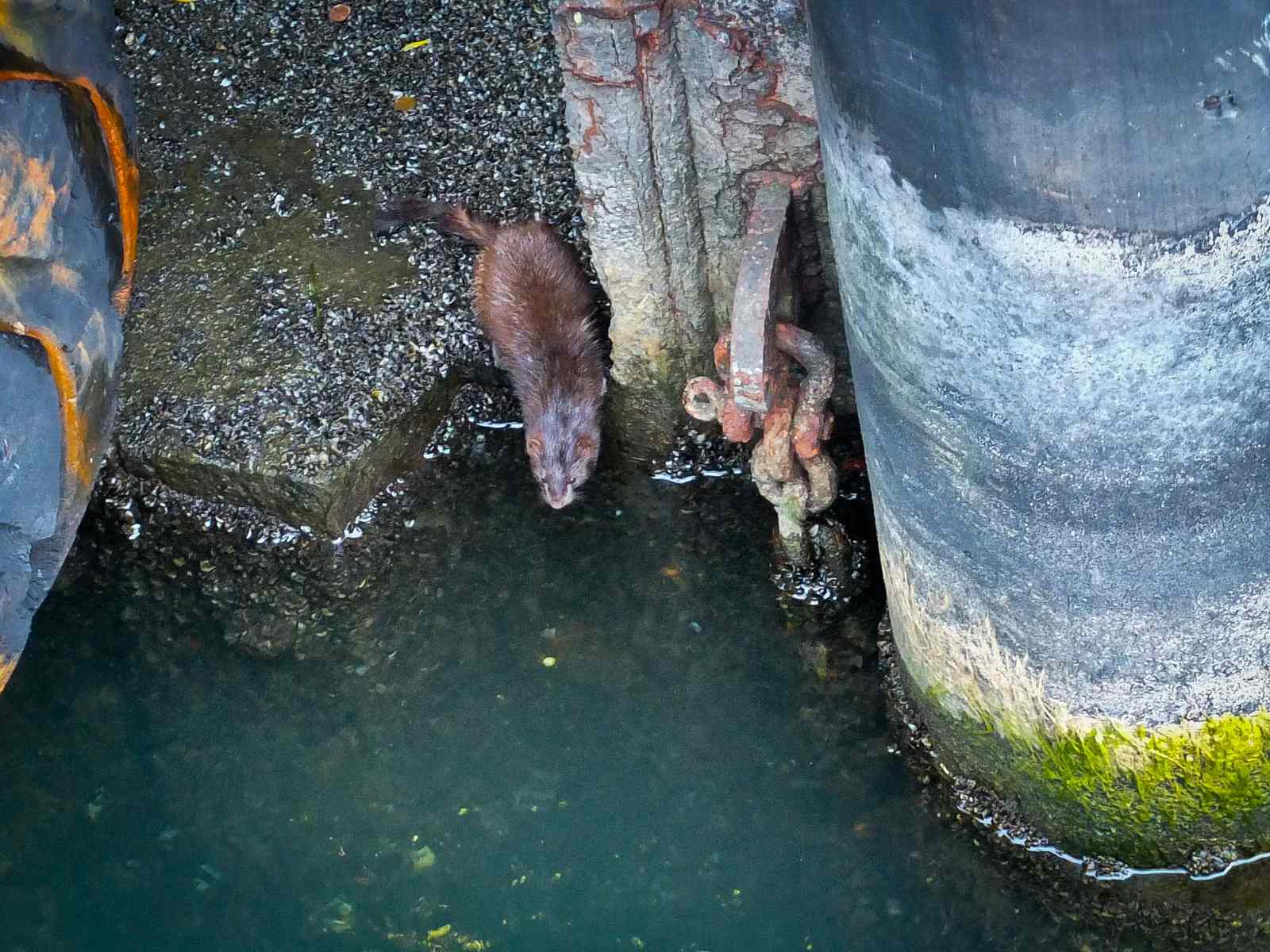
Mink have long, weasel-like bodies with thick shiny fur.
In the 20th century mink fur was used to make coats, which put a severe strain on their populations. Today, they are listed a species of least concern, and are especially abundant on the Toronto Islands.
Mink are sensitive to environmental contaminants like mercury and PCB, meaning that their presence in an area indicates good water quality.
They are also important predators and prey to a wide array of species. Mink eat rodents, fish, amphibians, crustaceans, and mollusks, and are eaten by red foxes, coyotes, and birds of prey.
15
Monarch Butterfly
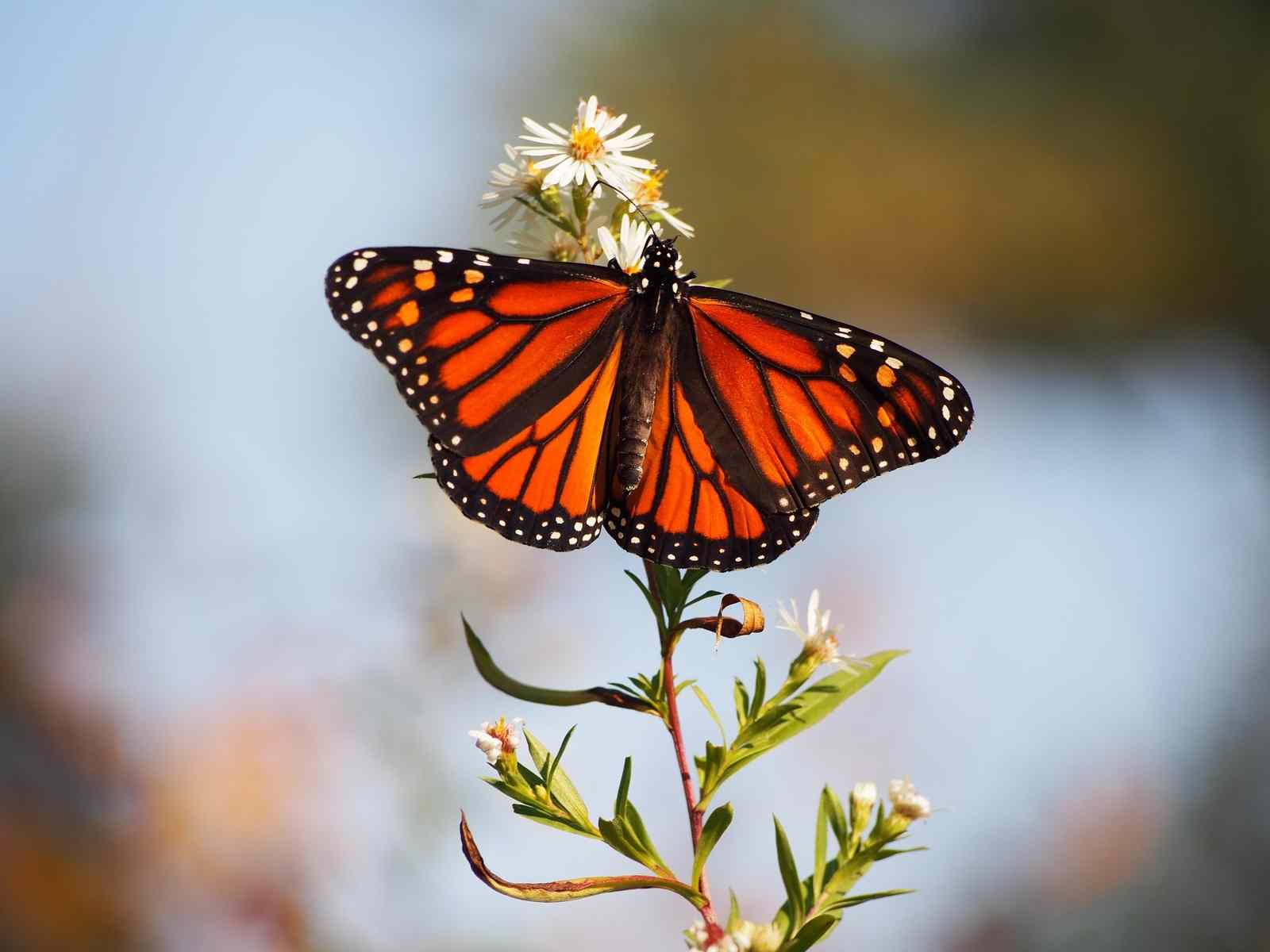
Monarchs are one of the most often recognized butterfly species in the world. Every winter, they migrate a whopping 4,000 kilometers south to Mexico and California before returning home in the spring.
In Ontario, Monarch Butterflies are species of special concern. This means they may become threatened or endangered with a combination of biological characteristics and identified threats (like insecticides and climate change).
Monarch Butterflies help fertilize plants by transferring pollen from one flowering plant to another. Without Monarch Butterflies and other pollinators, plants would not be able to produce seeds and fruit.
16
Mayflies
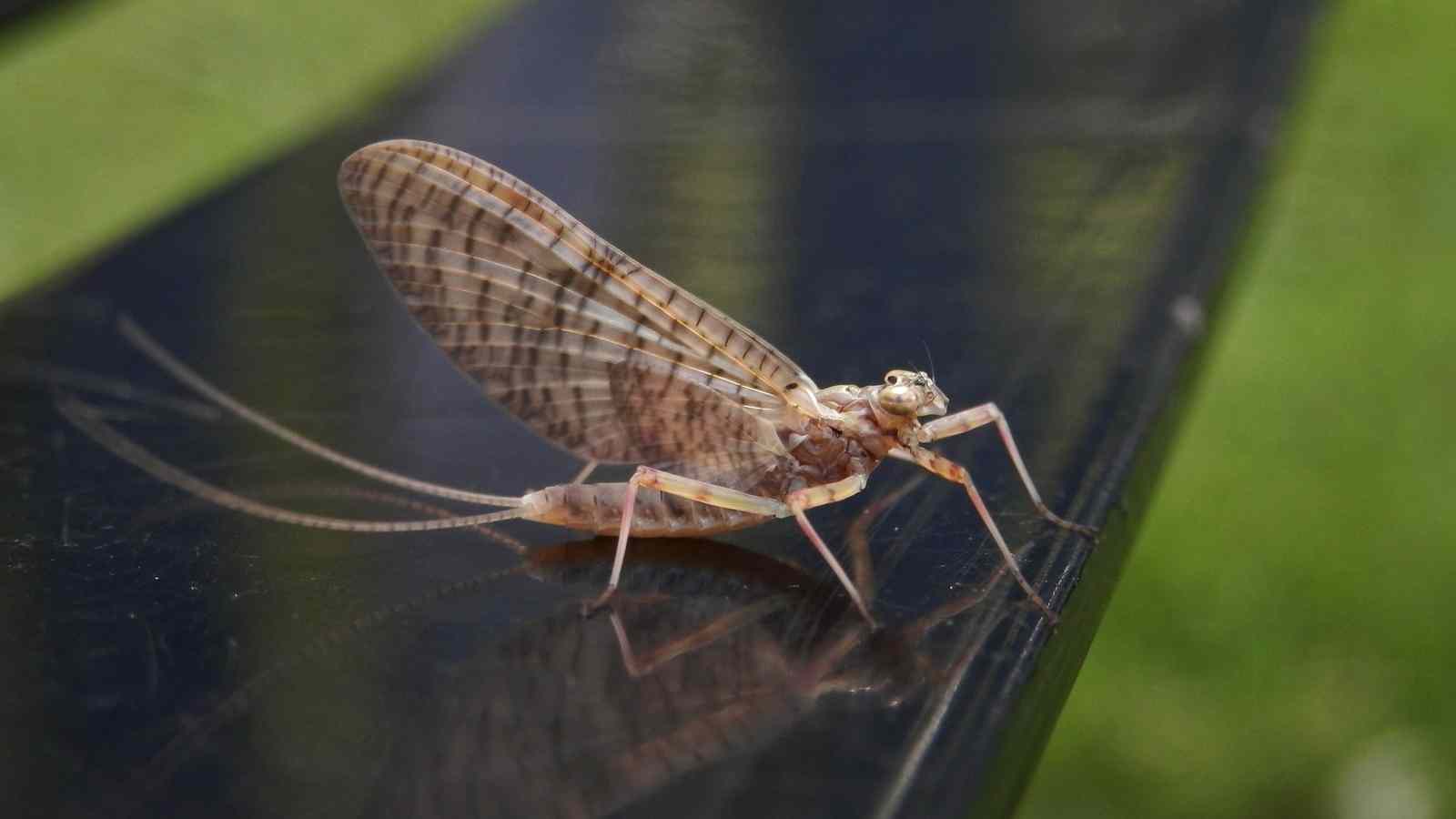
Have you ever ingested one of these flies while walking, running, or biking along the Toronto Harbourfront? They don’t taste very good, but before you write them off as pests, think about all the important roles they have in ecosystems.
By eating and being eaten, Mayflies help with the freshwater energy transfer cycle. They are also studied by people who monitor water quality. This is because Mayflies are sensitive to environmental conditions like water chemistry and temperature.
Did You Know?
Types of pollution
Litter
17
Water bottles, dog poop bags, and other plastic
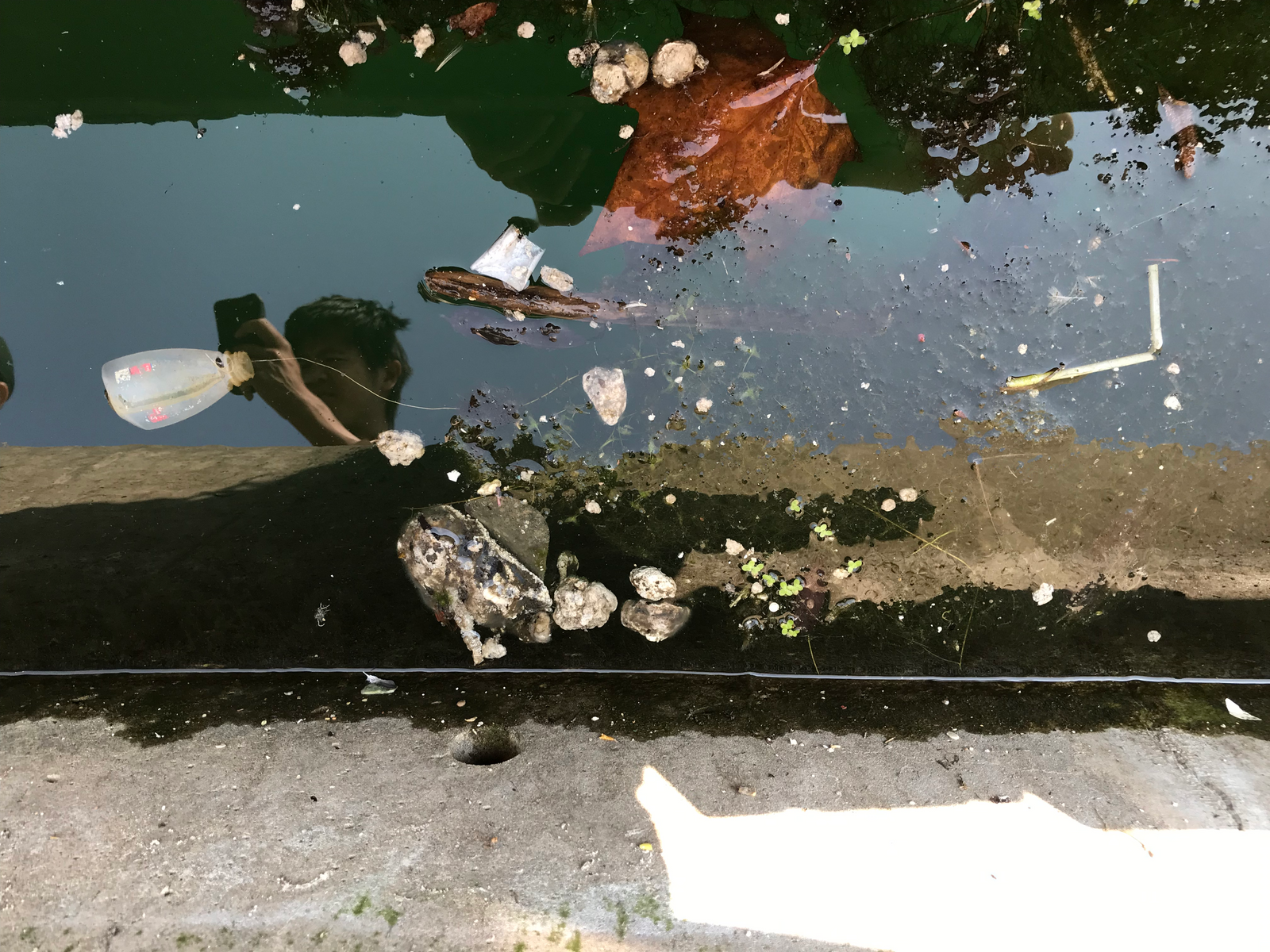
Instead of decomposing, plastic breaks down into smaller and smaller pieces until it becomes microplastic. Microplastics can be ingested by both animals and humans. Big pieces of plastic can ensnare animals or be mistaken for food. Large enough pieces won’t be able to leave the animal’s system, which can be fatal.
In addition to obvious plastic pollution like bottles or straws, you might spot dog poop bags in the water. These also degrade into microplastics.
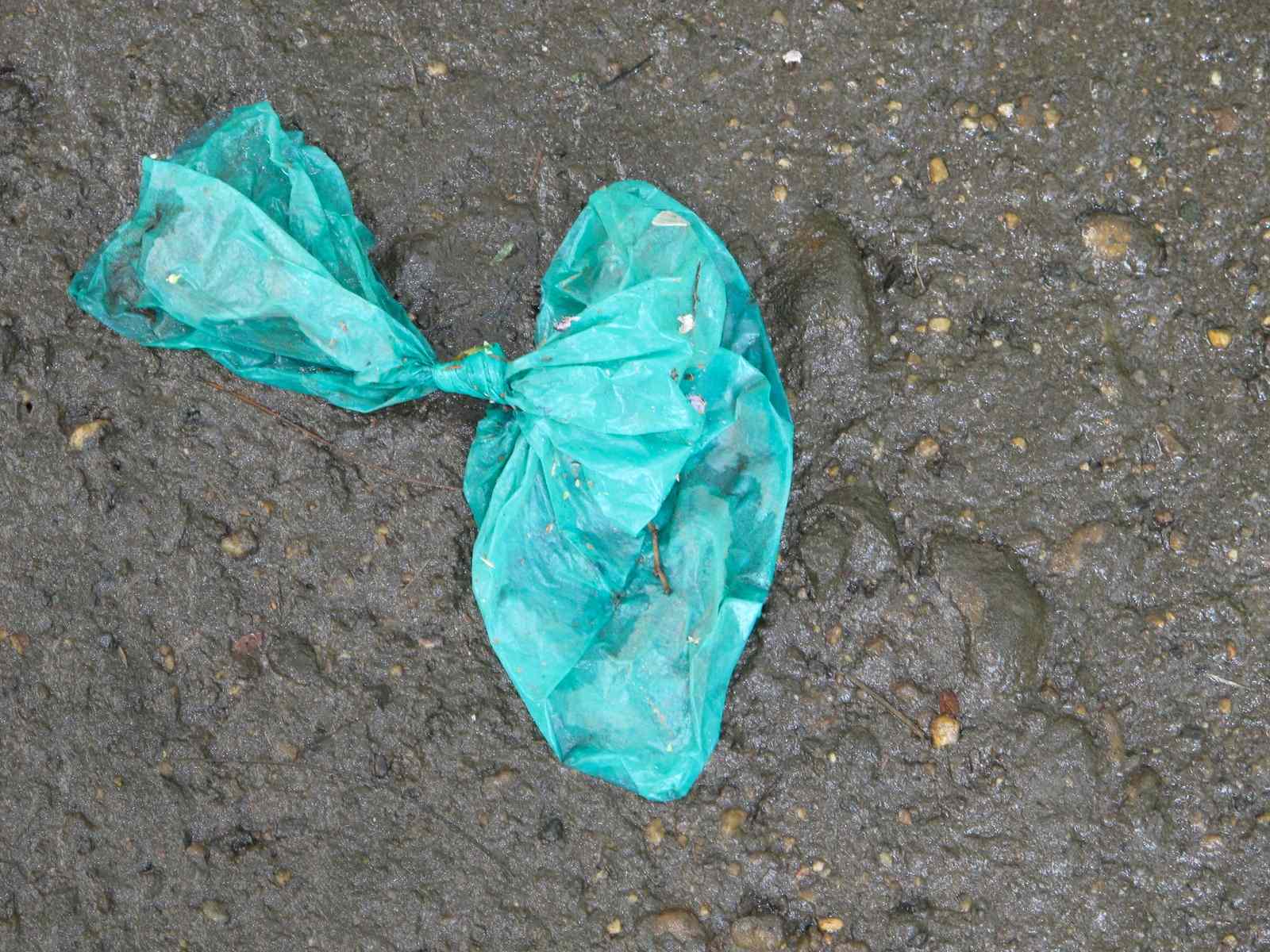
Cigarettes are another type of plastic pollution. They release microplastics and leach toxins, chemicals, and carcinogens into the water, which can kill marine life.
Did You Know?
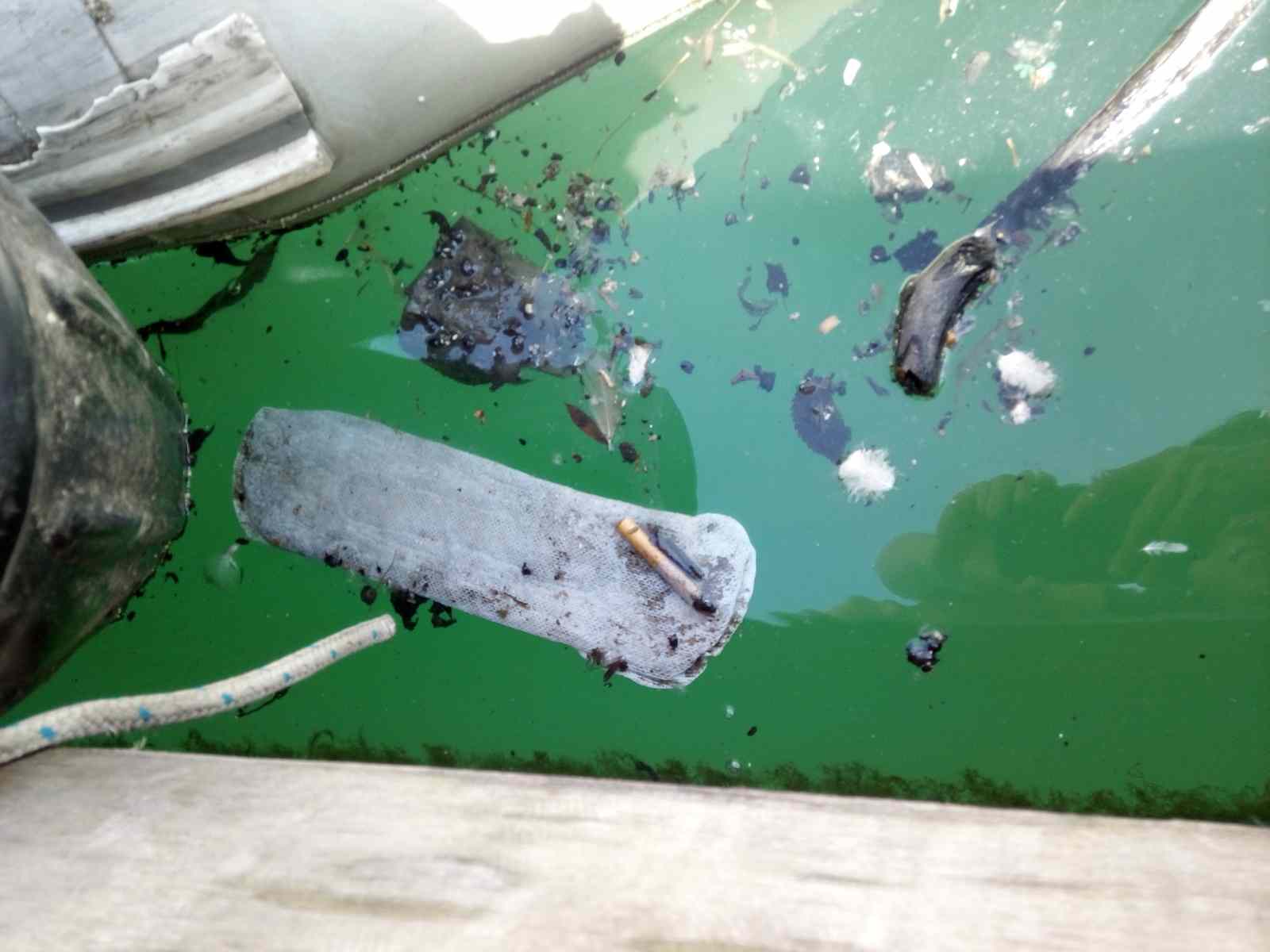
18
Tim Hortons cups and cans
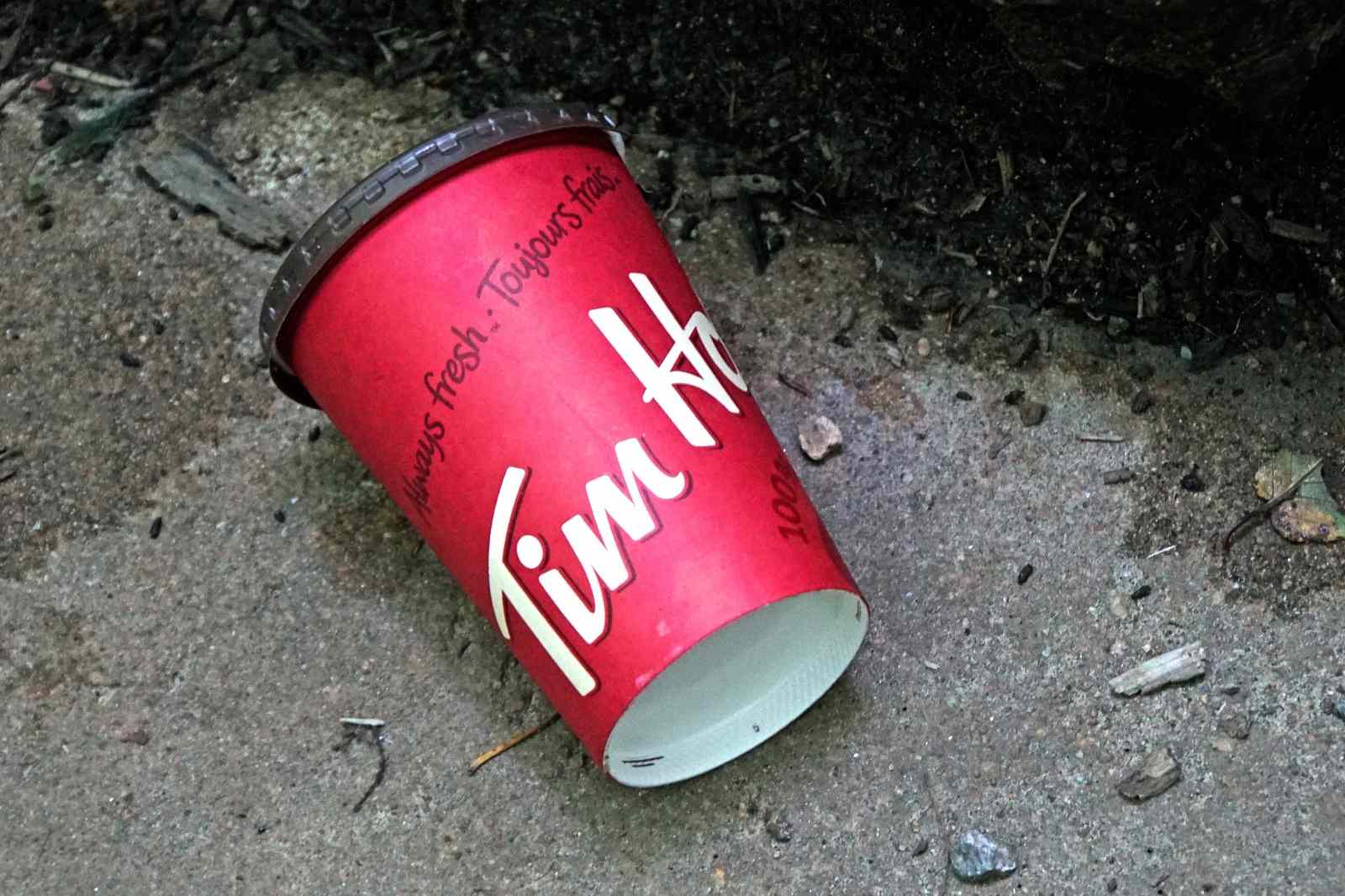
Tim Hortons cups and lids are one of the most common types of pollution found during Canadian shoreline cleanups. Tim Hortons cups are made out of polystyrene, which degrades very slowly and can leach chemicals into the water.
You might see aluminum cans floating in the water, too. Cans littered on the ground may blow into the water or be carried into there by runoff from heavy rain or melting snow.
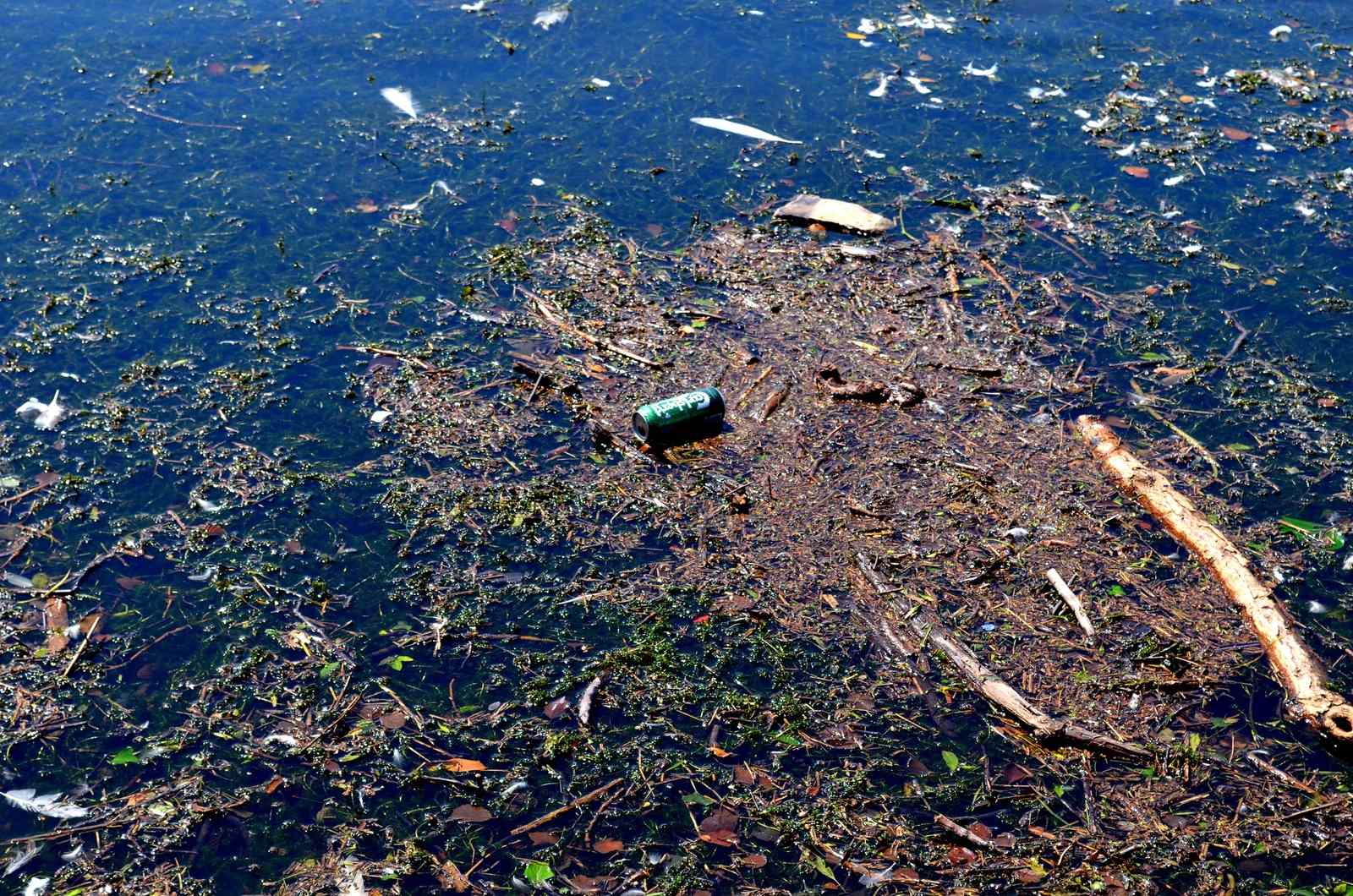
Sewage
Toronto has combined sewer systems. These systems collect wastewater (such as what you flush) and stormwater (such as runoff from city streets) in the same pipe.
In a perfect world, the water that collects in this pipe goes to a water treatment plant to be cleaned.
But during heavy rainfall, the amount of water entering the sewers can exceed the sewer’s capacity. Even in dry weather, Toronto may generate more wastewater than its sewers can hold.
When combined sewer systems get too full, they are designed to bypass the treatment plant and overflow into local waterbodies.
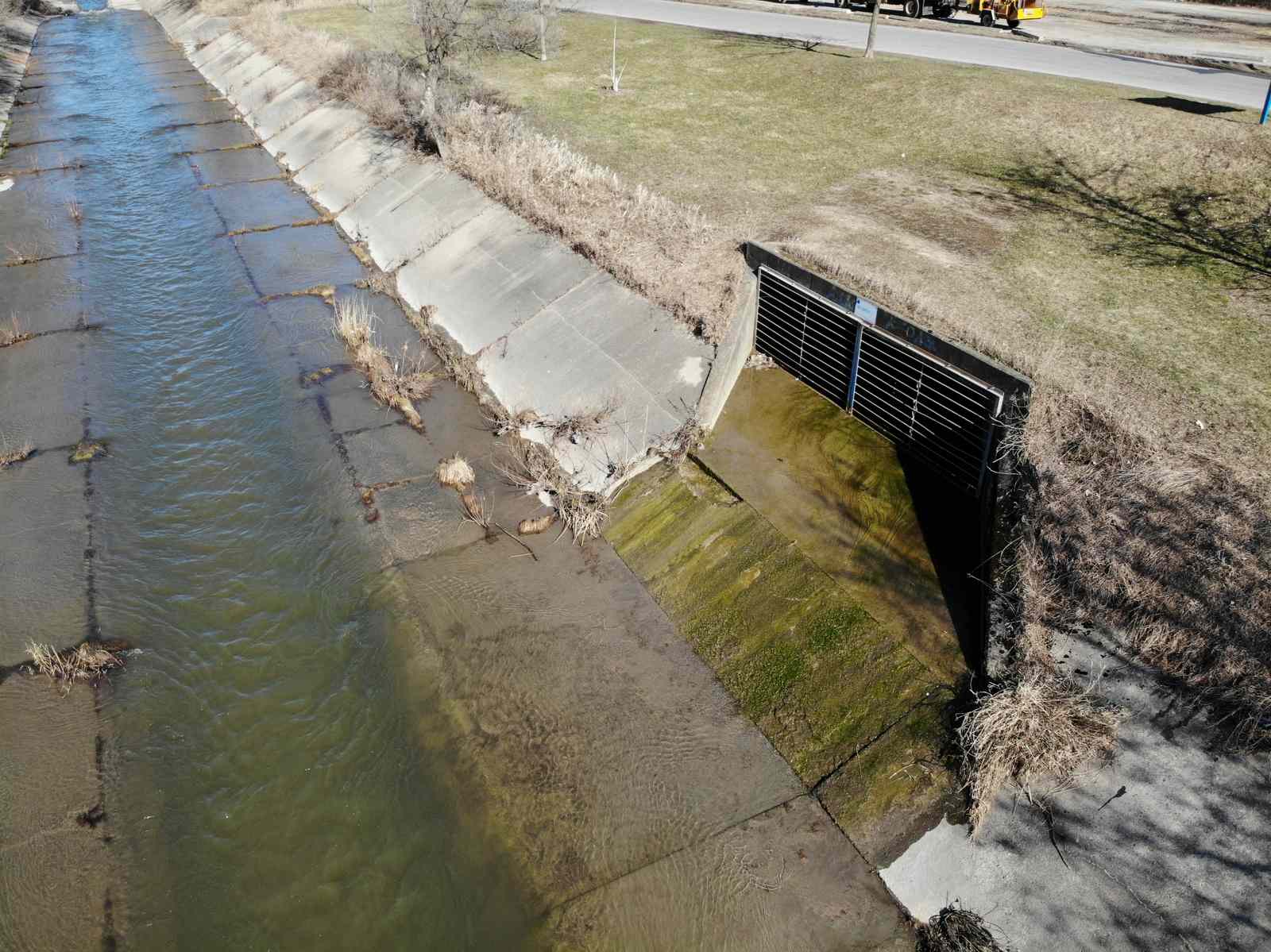
Did You Know?
Seeing certain things in the water indicates that a sewer has overflowed into the lake.
If you see wipes, face masks, plastic gloves, condoms, tampon applicators, syringes, or dead animals in the water, it’s likely that sewage pollution and a host of bacteria and viruses are present in the water.
Coming into contact with water after a combined sewer overflow can make you very sick, and it can harm plants and animals too.
If you want to avoid recreating in polluted water, check out Swim Guide, a free website and app that delivers real-time water quality information. Click here to find out the water quality for your favourite beach on Swim Guide.
19
Face masks, plastic gloves, and wipes
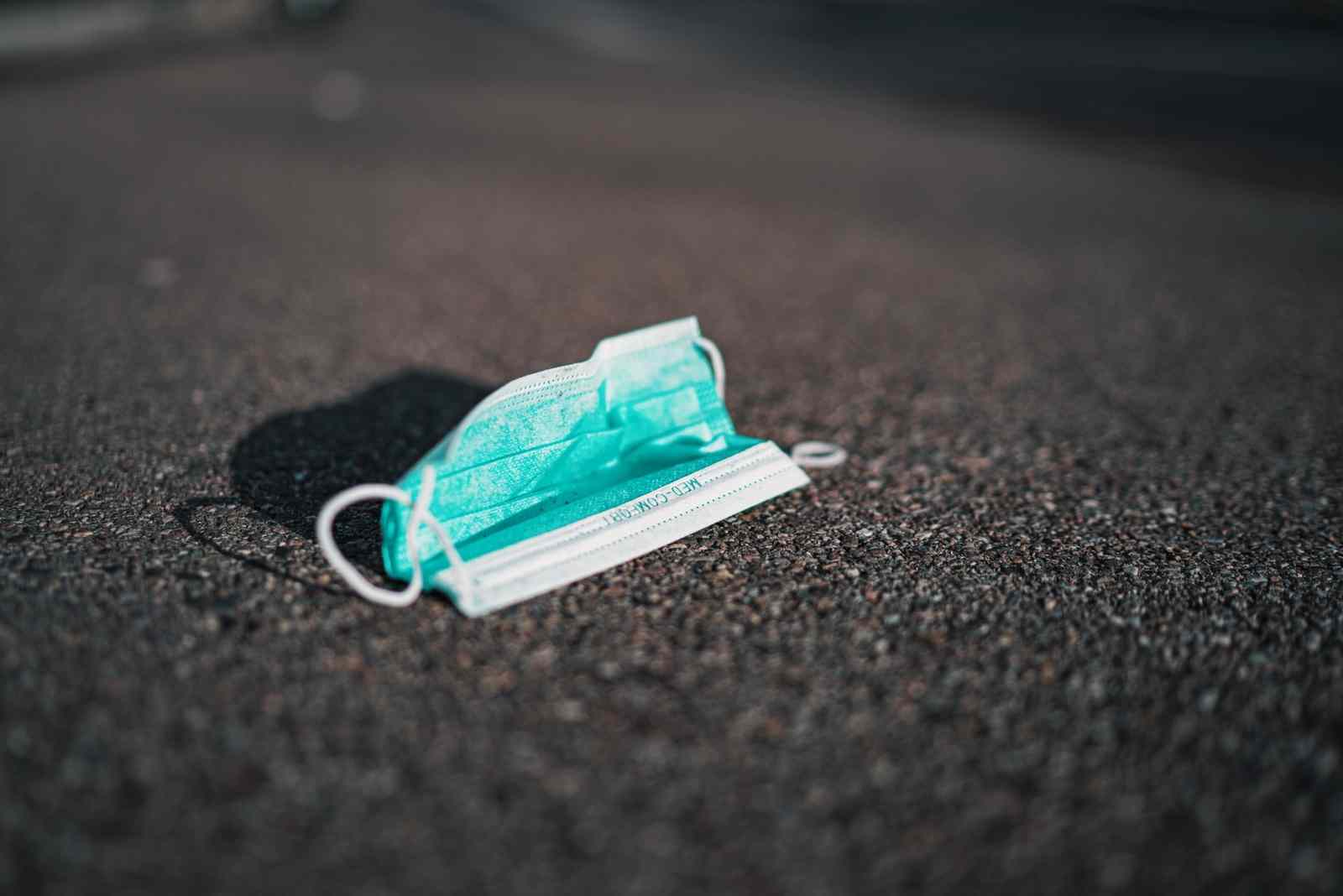
During Covid-19, you’ll find more and more face masks, gloves, and wipes in the water. These items should never be flushed down the toilet.
Even wipes that are labelled ‘flushable’ can clog sewers. Wipes can build up in pipes, causing households, businesses, and wastewater facilities to back up.
Read 3 things you need to to know about Covid-19 plastic pollution here.

Wipes eventually disintegrate, but their synthetic materials (like rayon or viscose) degrade into microfibers.
Did You Know?
Watch Lake Ontario Waterkeeper’s investigation into ‘flushable’ wipes here.
20
Tampon applicators and condoms
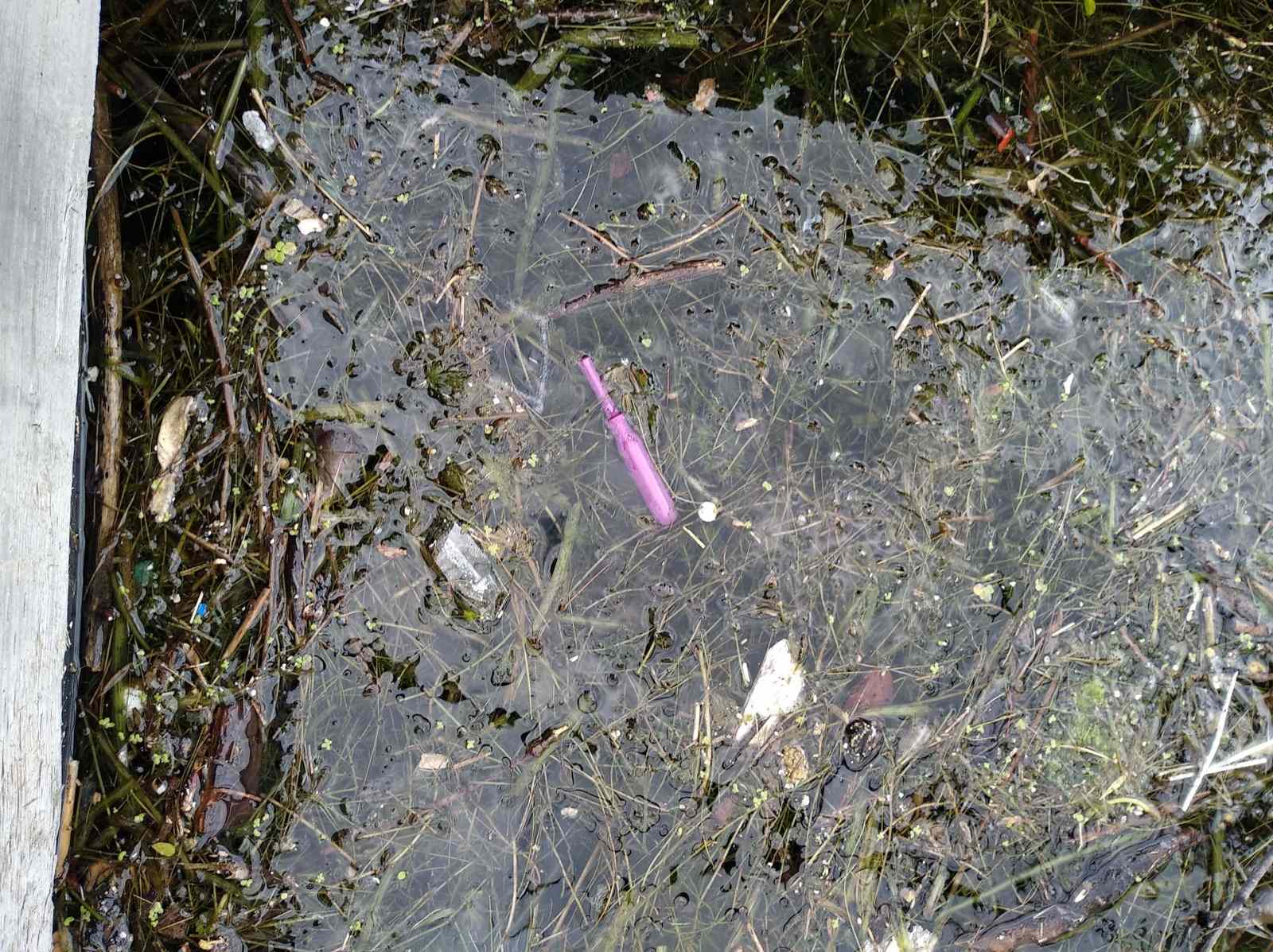
Flushing any part of a condom, tampon, or any feminine hygiene product down the toilet can cause a clog. Once these items enter the water, their plastics break down into microplastics and they can be eaten by animals.
During a 2017 beach clean up in Lake Ontario, 415 plastic tampon applicators were collected.
Other
21
Plants
Algae naturally occurs in the water, and a lot of it is harmless. But when excess nutrients are introduced (usually from agricultural runoff or fertilizers), algae can rapidly reproduce and cause an algae bloom.
Blue-green algae blooms can be quite dangerous, causing skin irritation, headaches, diarrhea, vomiting, fever, and abdominal pain. Blooms can be deadly to both wildlife and pets.
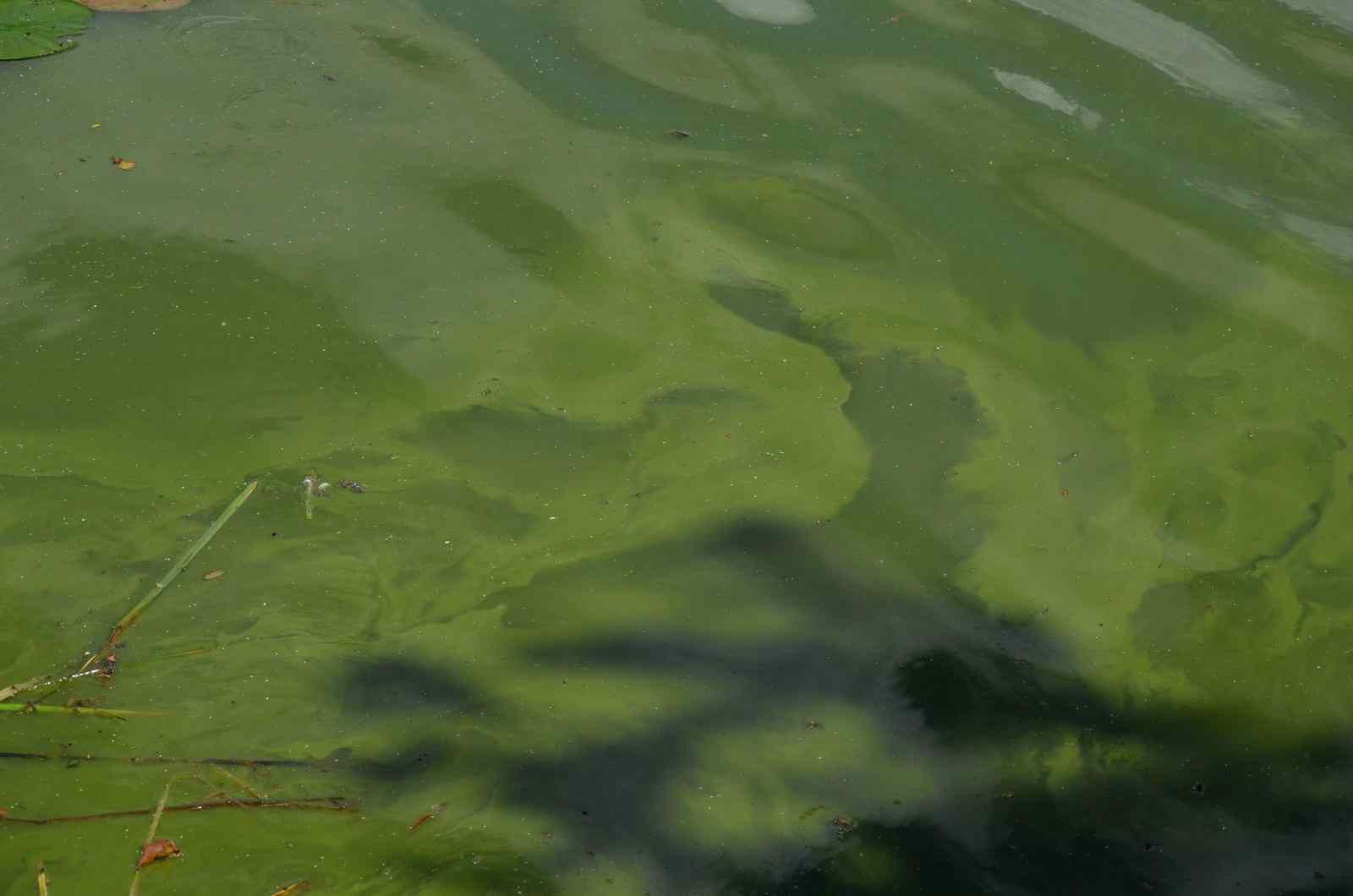
Blue-green algae usually looks like brown, blue, or neon green scum coating the water. Often, it has a strong bad smell.
In addition to algae, you might see Eurasian water-milfoil, one of the most widespread invasive aquatic plants in North America.
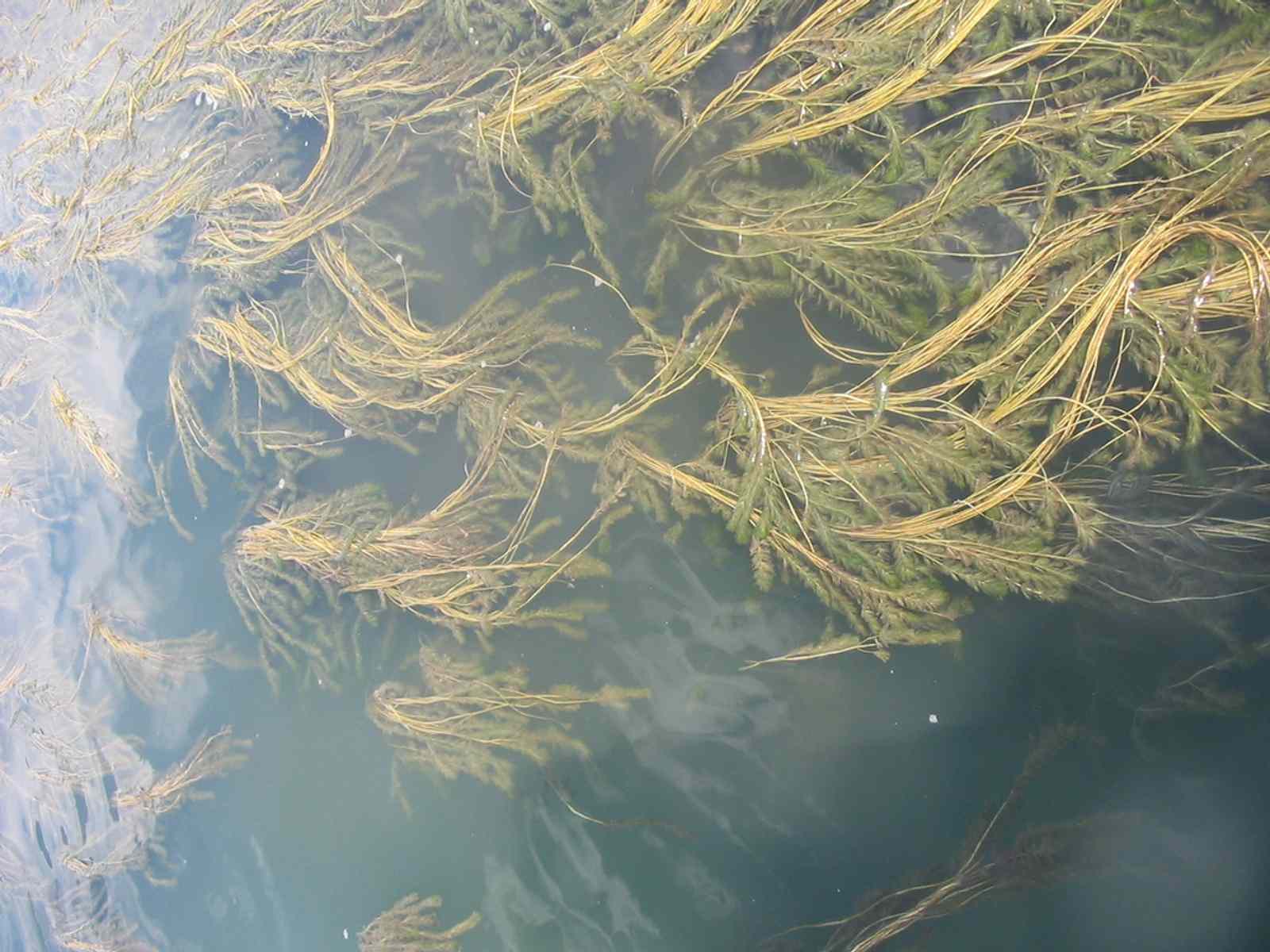
This plant likely entered Lake Ontario from the ballast water of ships or aquarium trade. Eurasian water-milfoil reduces biodiversity and depletes the amount of oxygen in the water.
22
Recreational water users
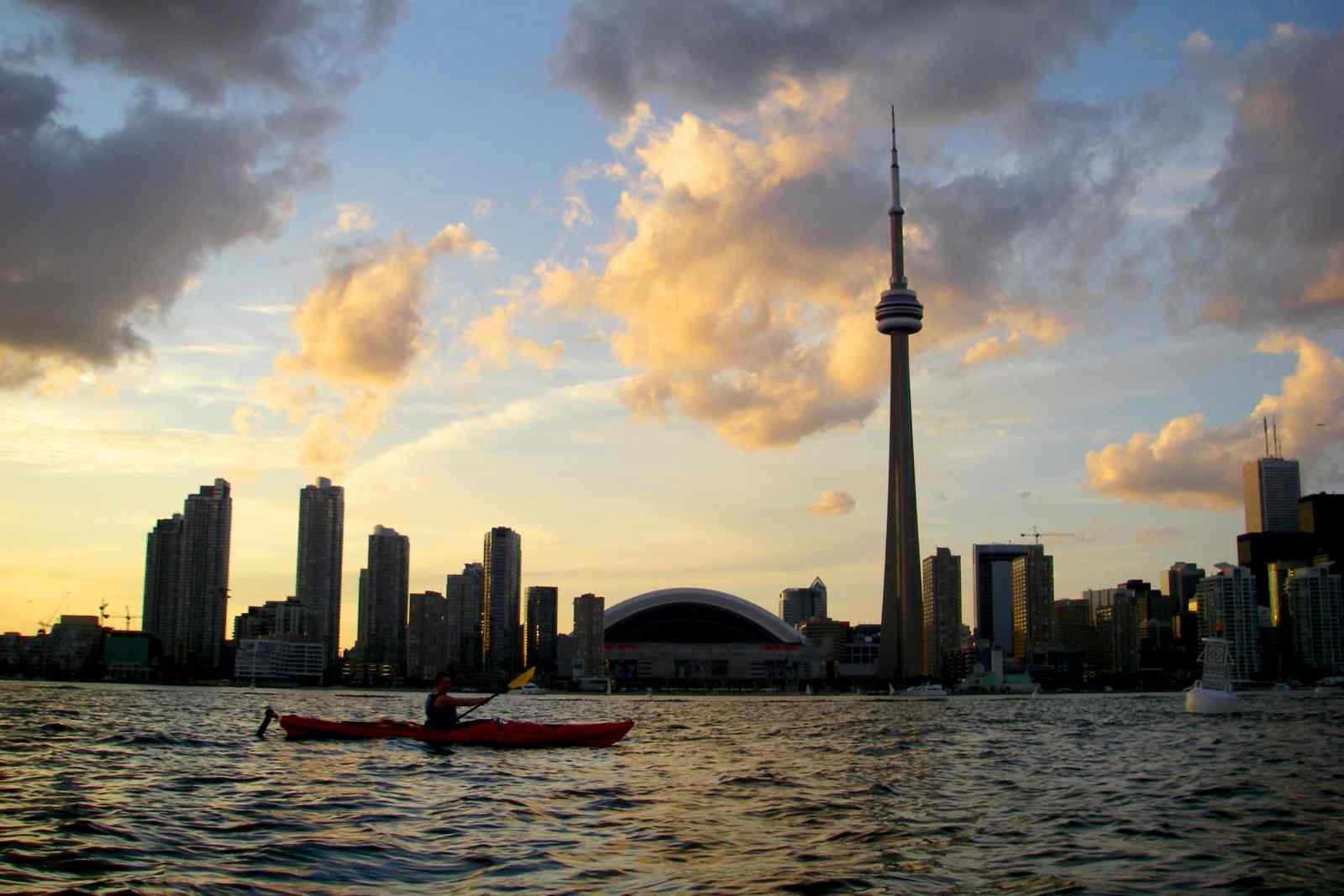
The Toronto Harbour is loved by so many people. Kayakers, canoers, stand up paddle boarders, sailors, and dragon boaters can all be seen enjoying the waters of the Toronto Harbour.
They brave hostile Canada Geese and pollution because they understand how important connecting with their local waters is. Spending time with Lake Ontario helps us to value it and recognize when the environment is changing or being harmed.
If we lose touch with our waters, we won’t be there to care—or even notice—when something is wrong.
23
Anything that needs Lake Ontario’s water
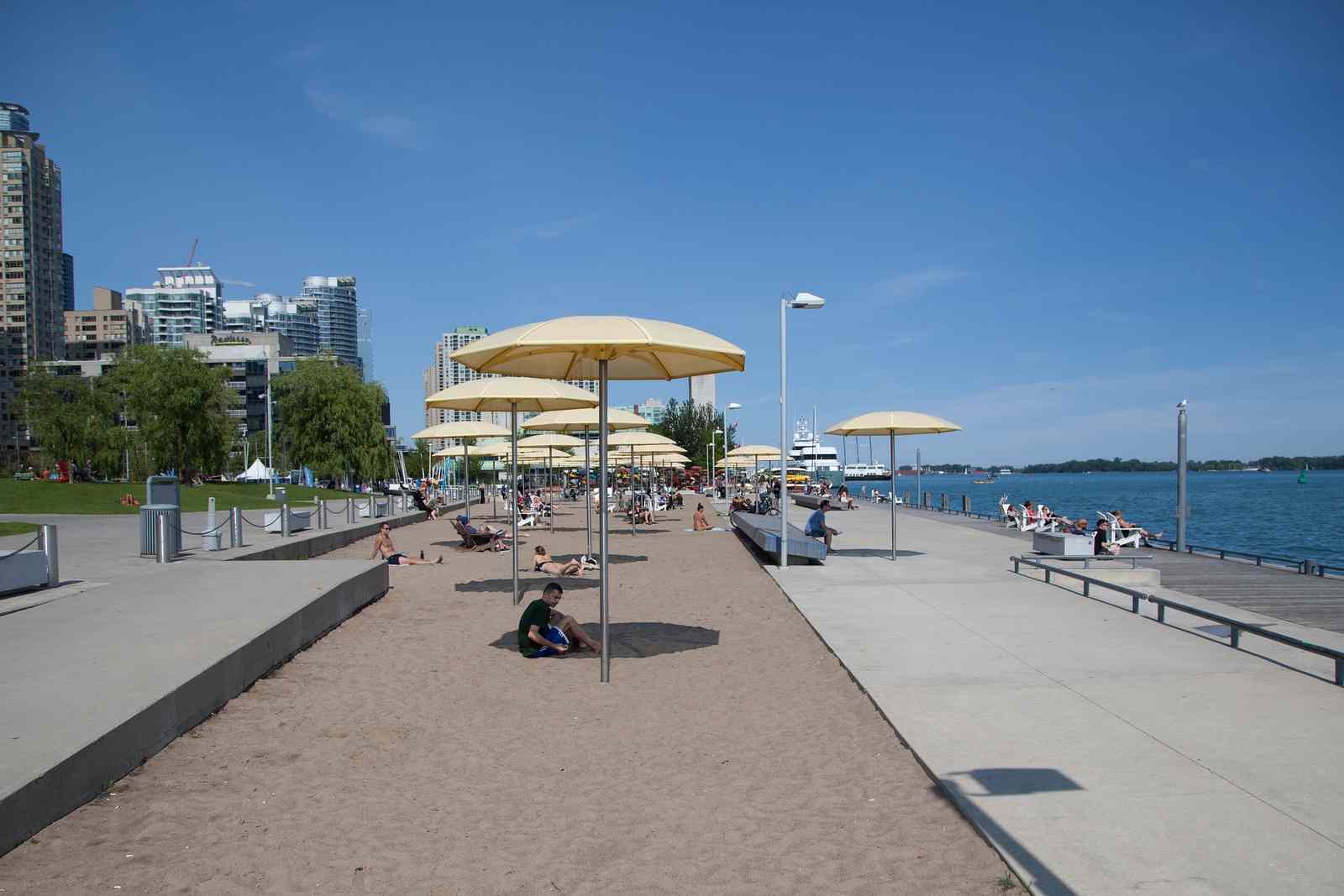
Recreational water users may be the most obvious type of ‘water-user’ you’ll see at the Toronto Harbour, but take a moment to look around you. Do you see plants? Animals? electricity?
What about you? Humans are made of up to 60% water. And where does that water come from?
Lake Ontario provides drinking water, food, transportation, electricity, and homes to millions of people and wildlife.
Lake Ontario’s water is around you constantly, shaping your life, whether you can see it or not. There are staggering amounts of invisible water there is on land, and the Great Lakes are even in your own home.
24
People sampling water quality
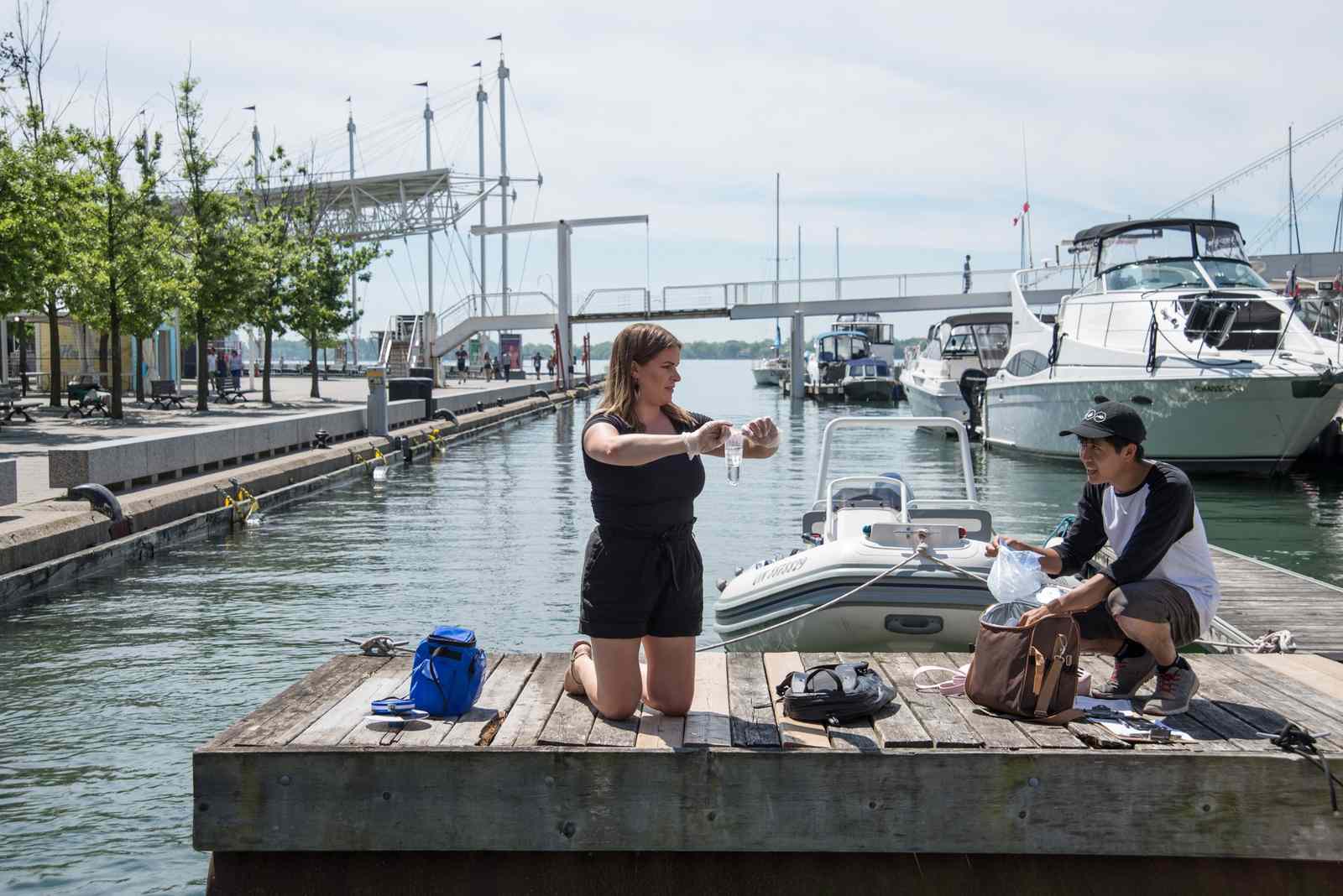
Great Lakes Guide connects you to the water. Swim Guide tells you where the water is clean enough to enjoy. Without current and reliable water quality data, people can get sick by unknowingly entering polluted water.
Recreational water quality changes all the time, just like like the weather.
Water that is healthy enough to be enjoyed for recreation is water that is healthy enough for all of the plants, animals, and people that depend on it everyday.
If you want to be part of the swimmable, drinkable, fishable water movement, you can learn to sample water and become a citizen scientist. And if you see us sampling water at the Toronto Harbour, come say hello!
Check out our other Great Lakes Bingos:
Bird Bingo: Nature from home: 24 birds you might see in your backyard
Tree Bingo: Nature from home: 24 trees to look for in your neighbourhood
